BUDAPESTI
WAGNER-NAPOK
BUDAPEST
WAGNER DAYS

WAGNER: A NÜRNBERGI MESTERDALNOKOK 2025. június 26., 28.
WAGNER: DIE MEISTERSINGER VON NÜRNBERG
26, 28 June 2025
26, 28 June 2025
Béla Bartók National Concert Hall

BUDAPESTI
WAGNER-NAPOK
BUDAPEST
WAGNER DAYS

WAGNER: A NÜRNBERGI MESTERDALNOKOK 2025. június 26., 28.
WAGNER: DIE MEISTERSINGER VON NÜRNBERG
26, 28 June 2025
26, 28 June 2025
Béla Bartók National Concert Hall
Conductor: Ádám Fischer
Hans Sachs, shoemaker: Tobias Schabel
Veit Pogner, goldsmith: Gábor Bretz
Sixtus Beckmesser, town clerk: Bo Skovhus
Fritz Kothner, baker: Miklós Sebestyén
Walther von Stolzing, a young Franconian knight: Magnus Vigilius
Eva, Pogner’s daughter: Polina Pasztircsák
David, Sachs’s apprentice: Cornel Frey
Kunz Vogelgesang, furrier: Tivadar Kiss
Balthasar Zorn, pewterer: Barna Bartos
Augustin Moser, tailor: Péter Bodolai
Hans Schwarz, stocking wearer: Dávid Dani
Hans Foltz, coppersmith: Marcell Bakonyi
Magdalene, Eva’s nurse: Erika Gál
A Nightwatchman: Dömötör Pintér
Konrad Nachtigall, tinsmith: Attila Dobák
Ulrich Eisslinger, grocer: Gergely Ujvári
Hermann Ortel, soapmaker: Ferenc Endrész
Featuring: Hungarian Radio Symphony Orchestra, Hungarian Radio Choir (choirmaster: Zoltán Pad), Hungarian National Choir (choirmaster: Csaba Somos)
Set design: Dirk Becker
Costumes: Renée Listerdal
Revival director: Sylvie Gábor
Director: Michael Schulz
Répétiteur: János Kovács
Musical assistants: László Bartal, Gábor Bartinai, Dóra Bizják, Paul Marsovszky
The English text is on page 38.
2025. június 26., 28.
Bartók Béla Nemzeti Hangversenyterem
Vezényel: Fischer Ádám
Hans Sachs, cipész: Tobias Schabel
Veit Pogner, ötvös: Bretz Gábor
Sixtus Beckmesser, városi írnok: Bo Skovhus
Fritz Kothner, pék: Sebestyén Miklós
Walther von Stolzing, ifjú frank lovag: Magnus Vigilius
Éva, Pogner lánya: Pasztircsák Polina
Dávid, Sachs inasa: Cornel Frey
Kunz Vogelgesang, szűcs: Kiss Tivadar
Balthasar Zorn, ólomöntő: Bartos Barna
Augustin Moser, szabó: Bodolai Péter
Hans Schwarz, harisnyatakács: Dani Dávid
Hans Foltz, rézműves: Bakonyi Marcell
Magdaléna, Éva dajkája: Gál Erika
Éjjeliőr: Pintér Dömötör
Konrad Nachtigall, bádogos: Dobák Attila
Ulrich Eisslinger, szatócs: Ujvári Gergely
Hermann Ortel, szappanfőző: Endrész Ferenc
Közreműködik: a Magyar Rádió Szimfonikus Zenekara, a Magyar Rádió Énekkara (karigazgató: Pad Zoltán), Nemzeti Énekkar (karigazgató: Somos Csaba)
Díszlet: Dirk Becker
Jelmez: Renée Listerdal
Játékmester: Gábor Sylvie
Rendező: Michael Schulz
Betanító karmester: Kovács János
Zenei munkatársak: Bartal László, Bartinai Gábor, Bizják Dóra, Marsovszky Paul
Játszódik:
Nürnbergben, a 16. század közepén
I. felvonás
A Katalin-templom Nürnbergben. Nürnbergbe érkezvén az ifjú frank lovag, Walther von Stolzing beleszeret Veit Pogner aranyműves lányába, Évába. Magdalénától, Éva dajkájától azonban megtudja, hogy Éva már nem szabad, mert másnap, a Szent János-napi ünnepségen tartandó énekverseny győztese nyeri majd el a szép és jómódú polgárlány kezét.
Walther, hogy részt vehessen a versenyen, nyomban megpróbálja magát felvetetni a mesterdalnokok közé. Dávidtól, Hans Sachs cipészmester inasától vesz „gyorstalpaló leckét” a mesterdal szabályait illetően. A mesterek előtt próbát kell énekelnie, a szabályok betartásának ellenőrzése Beckmesserre, az agglegény írnokra hárul, aki maga is pályázik Éva kezére. Walther újszerű dala azonban nem felel meg a szigorú regulának, Beckmesser kárörömmel számolja össze a hibákat.
A mesterek elutasítják Walthert, támogatólag egyedül Hans Sachs lép fel mellette, akit megfogott a szokatlan hangulatú dal és a fiatal lovag személyisége.
Nürnbergi utca, Sachs és Pogner háza előtt. Leszáll az este. Apjától Éva megtudja, hogy Walther elbukott a vizsgán. A szerelmesek elhatározzák, hogy elszöknek, de a műhelye előtt dolgozó Sachs, aki maga is gyengéd érzelmeket táplál a lány iránt, jelenlétével akadályt jelent számukra. Megérkezik Beckmesser, hogy szerenádot adjon Éva ablaka alatt, de nem veszi észre, hogy a lány időközben helyett cserélt Magdalénával. Dalát amúgy sem tudja elkezdeni, mert Sachs hangos kalapálása és jókedvű suszterdala elnyomja minden próbálkozását. Végül Sachsnak énekli el a dalt, hogy kikérje véleményét. A cipész nem hagyja abba a munkát, hanem jókora kalapácsütésekkel jelzi a hibákat.
A zajra felébred Dávid, és azt hiszi, Beckmesser az ő szíve választottjának, Magdalénának ad szerenádot. Botrány tör ki, amely tömegverekedésbe torkollik, mivel az esti nyugalmukból felzavart nürnbergi polgárok is bekapcsolódnak a csetepatéba. Beckmessert alaposan helybenhagyják, az éjszakai verekedésnek az éjjeliőr vet véget.
III. felvonás
Hans Sachs műhelye, Szent János-nap hajnala. Dávid bocsánatot kér Sachstól az előző éjszakai eseményekért. Walther, aki végül a cipésznél töltötte az éjszakát, elmeséli az álmát, melyet Sachs segít szabályos dalformába önteni. A váratlanul betoppanó Beckmesser megtalálja a cipész által lejegyzett dalt, és azt hiszi, Sachsnak is szándékában áll elindulni Éva kegyeiért. El akarja lopni a papírt, ám a cipész észreveszi, és váratlan nagylelkűséggel az írnoknak ajándékozza azt. Beckmesser boldogan távozik, abban a reményben, hogy „Hans Sachs költeményével” majd bizonyára megnyeri a versenyt.
Hamarosan Éva is megérkezik a műhelybe, és új cipőjére panaszkodva incselkedik a suszterrel. Az idősödő Sachs azonban bölcsen lemond a fiatal leányról az ifjú lovag javára. A híres kvintettben mintegy megpecsételik Walther és Éva, valamint Dávid és Magdaléna szerelmét.

Rét Nürnberg mellett. Kezdődik a dalnokverseny, felvonulnak a céhek és a város polgársága. Beckmesser hiába memorizálja a kapott versenydalt, képtelen előadni, és csúfosan megbukik. Sachs indítványára meghallgatják a valódi szerzőt, Walthert. Előadása mindenkit lenyűgöz, és ezzel elnyeri Éva kezét. A felkínált mesteri rangot először visszautasítja, de Sachs okos szavai a mesterségek becsületéről és a német művészet továbbélésnek szükségességéről megbékíti a nürnbergiekre megsértődött lovagot. Éva a győzelmi babérkoszorút Sachs homlokára teszi, Sachs pedig az arany mesterláncot a nép ujjongása közepette Walther nyakába akasztja.
Történt, hogy 1835 nyarán a magdeburgi színtársulat huszonkét éves karmesterét az igazgató toborzó körútra küldte, hogy új tagokat találjon a súlyos gondokkal küzdő társulathoz. A fiatalember számos várost végiglátogatott, egyebek mellett eljutott Bayreuthba és Nürnbergbe is. Hogy a rokokó operaházzal ékített kis bajor település lesz majd végső nyughelye, nyilván fel sem merült benne, de a közeli, nagy múltú városból, Nürnbergből különös élményt vitt magával, olyasmit, ami megragadta drámaalkotó képzeletét. Mivel húga a városban élt, néhány napig ott maradt, és leginkább a sógorával kocsmázott. Egyik este bemutattak neki egy jóravaló asztalosmestert, aki énekesnek hitte magát. A vidám ugratásból lármás kavalkád lett, a duhajkodók felverték a város csendjét, és a tréfálkozás csakhamar verekedéssé fajult. Richard Wagner, a kezdő komponista ekkoriban még csak első színpadi művén, az előadatlan Tündéreken volt túl, csírájában sem láthatta maga előtt, miként kerül majd kettősfúga formájában ez a groteszk, utcai csetepaté jó harmincöt évvel később bemutatott operája középpontjába, de az éjszaka hangulatát elraktározta magában. Visszatért Magdeburgba, ahol a társulat fél évvel később csődbe jutott, de búcsúzóul még előadta Wagner időközben elkészült második, A szerelmi tilalom című operáját. (A darab persze megbukott.)
A nürnbergi mesterdalnokok librettójának ötlete csak tíz esztendővel később körvonalazódott Wagnerben. Ekkor már „a Drezdai Királyi Operaház örökös udvari karnagya” büszke címet viselte; épp befejezte ötödik operája, a Tannhäuser hangszerelését, és már a következőn, a Lohengrinen dolgozott. A túlhajszolt zeneszerző 1845 nyarán orvosi tanácsra felfüggesztette a munkát, és a közkedvelt fürdőhelyre, Marienbadba utazott pihenni, ahol egyebek mellett Georg Gottfried Gervinus német irodalomtörténetének (Geschichte der poetischen National-Literatur der Deutschen) olvasásával múlatta az időt. Megihlette a 16. században Nürnbergben élt suszterpoéta, Hans Sachs személyisége, és azon frissiben papírra vetette A nürnbergi mesterdalnokok első prózafogalmazványát. A történet magja igencsak emlékezte-
tett a Tannhäuserére, csakhogy ezúttal a wartburgi vár minnesängerjeinek lánykérő dalversenyét a nürnbergi mesterdalnokok vetélkedése váltotta fel: azaz Wagner a mítosz hősvilágát lehozta a joviális bajor polgárok közé. Nem is szánta másnak, mint vidám szatírának, romantikus operája könnyed utójátékának. Aztán azonban félretette, és visszatért a Lohengrin szövegkönyvéhez. Hans Sachs történetét csak tizenhat év múlva vette elő újra.
Tulajdonképpen másodjára is a Tannhäuser szította fel benne a Mesterdalnokok utáni vágyat. Legalábbis részben. 1861 tavaszán valóságos vesszőfutás volt számára az a három Tannhäuser-előadás, amellyel Párizst akarta meghódítani. A francia főváros kedvéért fordult újra a Drezdában egyszer már bemutatott darabhoz, hogy eleget tegyen a helyi ízlésnek, és balettet komponáljon a műbe. A zenetörténet egyik legnagyobb bukásának története közismert: Wagner a szokásokat figyelmen kívül hagyva az első felvonásba írta a Bacchanáliát, amelyet a Jockey Club arszlánjai felettébb nehezményeztek, mivel ők csak a második felvonástól jártak operába a szép lábú táncosnők kedvéért. Mindez kapóra jött bizonyos politikai köröknek is, amelyek a helyzetet kihasználva a darab elleni tüntetéssel III. Napóleon orra alá akartak borsot törni. Az estéről estére dagadó botrány nyomán Wagner visszavonta a Tannhäuser partitúráját.
A Ring komponálásával küzdő, a párizsi fiaskótól, adósságoktól és magánéleti gondoktól gyötört, hontalanul vándorló zeneszerző a sanyarú helyzethez képest meglepően derűlátó ötlettel rukkolt elő kiadójánál 1861 októberében: „A nagy Nibelung-műhöz – ez idő alatt s ezzel a céllal – nem szeretnék visszatérni pillanatnyilag. Ehhez szeretném megvárni, míg beköszönt a külső sikerek időszaka […], így hát hangulatomnak és körülményeimnek egyaránt megfelelő, szerencsés ötletnek tartom, hogy rögtön hozzáfogjak egy népszerű vígopera kidolgozásához. A teljes vázlatot elkészítettem már hozzá. Az opera címe: A nürnbergi mesterdalnokok, és főhőse a kedélyes költő, Hans Sachs.”
Wagnert érezhetően lelkesítette az újszerű terv, amely, saját szavai szerint, „nem igényel sem hőstenort, sem súlyos drámai szopránt”, „komikus és könnyed, bárhol gond nélkül előadható”. A kiadót is meggyőzhette ez az érvelés, mert a partitúráért jelentős összeget ígért. Wagner, mielőtt visszatért volna Párizsba, hogy ott írja meg a szövegkönyvet, még a nagylelkű Wesendonck házaspár meghívására ellátogatott

kedvenc Velencéjébe, ahol saját állítása szerint Tiziano híres festményéből, a Mária mennybemeneteléből nyert ihletet a komponálásra, és a visszaúton Bécs felé vonatozva már a muzsikán töprengett. „A hosszú út során kelt életre először bennem zeneileg a Mesterdalnokok, melynek költeményét még csupán legkorábbi megfogalmazásban hordtam magamban. Teljes világossággal bomlott ki bennem a C-dúr nyitány főrésze” – írta visszaemlékezésében. Mintha csak elégtételt akar volna venni a bukásért, a német művészetet dicsőítő, hatalmas librettót alig két hónap alatt megírta a francia fővárosban.
Az elkészült alkotás azonban minden volt, csak nem könnyed és gond nélkül előadható. A harmadik felvonás egymagában olyan hosszú lett, mint egy átlagos opera, és igencsak emberpróbáló feladat a Sachsot megjelenítő bariton számára. Akad benne vígjátéki elem, de ezt a „komédiát” sokkal inkább rezignációval színezett kedélyesség járja át, mintsem féktelen móka, kacagás. Utólag maga Wagner is elcsodálkozott azon, mivé formálódott keze alatt az eredeti ötlet: „Csak most látom tisztán, miért nem lehetett igazán tartós az a derűs hangulatom, amelynek a Mesterdalnokok fogalmazványa meg akart felelni. Azért, mert annak idején csak ironikus volt, és inkább irányzatom és lényem csupán alaki-művészi vonásaira, mintsem annak az életben gyökerező lényegére vonatkozott.”
Bizony, az 1845-ös fogalmazvány – egy harminckét éves férfi írása – még nem tartalmazta a szerelemről való bölcs lemondás motívumát. Ahhoz Wagnernek le kellett számolnia magában a Trisztán és Izolda mámorító, halálos szenvedélyével. Éppen Velencében – ahol majd huszonkét év múlva, egy februári napon örökre megáll a szíve –temette el magában Mathilde Wesendonck iránti szerelmét, amelyből a Trisztán és Izolda sötét zenedrámája született. Wagner a Mesterdalnokokat eredetileg a Tannhäuser visszájának szánta, de végül a Trisztán és Izolda ellenpontja keveredett ki belőle. Legalábbis ami az önéletrajzi, lélekgyógyító vonásokat illeti. Hogy kétséget se hagyjon felőle, a harmadik felvonásba beleírta, sőt zeneileg is belekomponálta Marke király panaszát, midőn Hans Sachs a sokat tapasztaltak belátásával utasítja el gyengéden Évát, és engedi át az ifjú Walthernek:
Lányom, Tristánról és Izoldról
Tudok egy bús regét.
Hans Sachs Marke sorsára
Nem vágyik semmiképp.
Jókor megtudtam a valót, Mert már a játék veszélyes volt. (Várady Antal fordítása)
Az már Wagner életrajzának szépséghibája, hogy míg lemondott az ő Izoldájáról, Mathilde Wesendonckról, elcsábította és magához láncolta leghűségesebb barátja, Hans von Bülow feleségét – Liszt Ferenc lányát –, Cosimát.
Ám a Mesterdalnokoknak van egy másik olvasata is, amelyik talán fontosabb, mint a korosodó férfi szerelmi dilemmáinak mérlegre tétele, ez pedig a nemzeti művészet lényegéről való gondolkodás. Itt bicsaklik meg csak igazán az eredeti szándék: a könynyed, komikus jelleg. Wagner sokkal inkább zenedrámát, filozófiai művet komponált ezúttal is, mintsem opera buffát. Találóan írja Thomas Mann: „[…] nagysága bizonyítékát látjuk abban, ahogyan alkalmazkodni szeretne a világhoz – és nem tud! Kisméretű vígoperát akar írni, szatírjátékot a Tannhäuser mellé, önmaga és a közönség pihentetésére, a legjobb szándékkal törekedve a könnyűre, a gyakorlatilag élvezhetőre – és mi lett belőle? A nürnbergi mesterdalnokok. […] Az ember nem húzódhat össze kisebbre, mint amekkora, nem bújhat ki a bőréből: az ember azt alkotja, ami ő maga, és a művészet – igazság, igaz vallomás a művészről.”
Pedig az alapkonfliktus nem különösebben bonyolult, tulajdonképpen vérbeli vígjátéki helyzet: az eladósorba került hajadon kezéért dalversenyen küzd meg a rosszindulatú, kicsinyes, csalástól sem visszariadó agglegény a váratlanul felbukkanó vetélytárssal, egy nyíltszívű, ifjú művészlélekkel – és végül a jó győz a rossz felett. Wagner azonban e sajátos párharcba belezsúfolta mindazt, amit a művészetről, népről és nemzetről, tradícióról és megújulásról gondolt.
A háttér felvázolásához igen alapos munkát végzett. Egyebek mellett felhasználta Gervinus német irodalomtörténetét, E. T. A. Hoffmann Meister Martin der Küfner und seine Gesellen (Márton mester, a bognár és társai) című novelláját,
Johann Ludwig Deinhardstein Hans Sachs című színjátékát (amelyből korábban már készült operalibrettó Albert Lortzing számára), továbbá Johann Christoph Wagenseil 1697-ből származó, Buch von der Meistersinger holdseiligen Kunst (Könyv a mesterdalnokok boldogságosan szép művészetéről) című munkáját, valamint Jacob Grimm Über den altdeutschen Meistergesang (Az ónémet mesterdalról) című könyvét.
A kiterjedt előtanulmányokra azért volt szükség, hogy történelmi szituációt teremthessen egyetlen olyan darabjához, amely nem mitológiai környezetben, hanem valós helyszínen és időben játszódik. Míg Tannhäuser, Wolfram von Eschenbach vagy Walther von der Vogelweide alakjának ténylegesen alig volt köze azokhoz a minnesängerekhez, akikről mintázta őket, és Erzsébetben is nehéz ráismerni Árpád-házi Szent Erzsébetre, addig a nürnbergi mesterek közül többen is (Hans Sachs, Kurt Nachtigall, Hans Vogel, Hans Foltz) hús-vér figurák, akik valóban megközelítőleg úgy éltek Nürnbergben, ahogyan az opera bemutatja őket. Közülük Hans Sachs az egyetlen, aki tartósan az irodalmi kánon részévé vált. Jelentős és felettébb termékeny költő volt, több mint hatezer művet szerzett, amelynek kétharmada volt mesterdal, a többi színmű, zsoltár, dialógus és mese.
Wagner azonban nem az egész életműre, csakis a mesterdalra mint formára összpontosít, és ez remek választás a részéről. Ez a sajátos műfaj egyfelől alkalmas rá, hogy bonyolult szabályrendszerén keresztül mérhetővé tegye a versenyt, másfelől jó eszköz arra is, hogy a merev szabályoknak való megfelelés kényszerét szembeállítsa az ihletett művészi alkotás szabadságigényével. Wagner már rögtön az opera kezdetén paródia tárgyává teszi e költői formát azzal a komikus betéttel, ahogy a „félművelt” inas, Dávid tévedésektől hemzsegő előadásával próbálja meg sebtében beavatni a szerzői alapismeretekbe Walther von Stolzingot, a szerelmes „kívülállót”. Mindezt tetézi a Kothner által felolvasott tabulatúra, azaz a kötelező előírások száraz felsorolása. E kettős útbaigazítás Prokrusztész-ágyába kellene Walthernek begyömöszölnie szárnyaló fantáziáját, hogy felvételt nyerhessen a mesterdalnok céhbe, e nélkül ugyanis el sem indulhat a versenyen. Legfőbb bírája, hibáinak számlálója pedig nem más, mint potenciális ellenfele! Csoda, ha elbukik a felvételi vizsgán?
Walther „új időknek új dalaival” érkezett. Romantikus, áradó alkat, nem képes, de valójában nem is akar megfelelni az ósdi regulának. Riválisa, Beckmesser, a
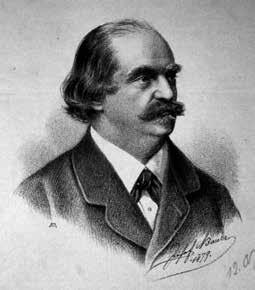
rosszindulatú, pedáns hivatalnok nem akarja, de valójában nem is képes megérteni az újszerű művészi alkotást. Előbb elgáncsolja, majd eltulajdonítja a vetélytárs dalát, amelyet persze nem tud előadni. Közismert, hogy Beckmessert, az akadékoskodó jegyzőt Wagner eredetileg Hans Lick néven akarta szerepeltetni a darabban – saját ellensége, Eduard Hanslick zenekritikus nevéből faragva élcet. Walther diadala Beckmesseren az ihletett alkotó diadala a formalizmuson nevelkedett kritikus felett.
Wagner azonban nem zárja le a történetet azzal, hogy az új, a szabad művész legyőzi a konvencionális szakma képviselőjét. Az ő igazi hőse már nem az ifjú lázadó, hanem a megújulni képes német tradíció letéteményese, Hans Sachs. Az ő segítsége nélkül Walther nem nyerhetne, és ő az, aki végül megérteti vele, hogy a hagyomány tisztelete nélkül nincs továbblépés, a lángelme önmagában mit sem ér, ha nem a közösségben, annak éltető nyelvében és kultúrájában gyökerezik. Sachs így inti a versenyen győztes, de a mesterdalnokok soraiba lépni nem akaró Walthert:
Becsüld a [német] mesternépet, Jó szellemid ők néked!
Hát megbecsüljed dalukat,
S ha szétszakad
A szent birodalom,
A romokon, Szent nyelvünk fennmarad!
A szent [német] művészet az, Mi fennmarad!
A „német” jelző hangsúlyozása Wagner szövegének alapvető része, ezt azonban a második világháború után használt magyar fordításokból igyekeztek kigyomlálni, mivel a Deutsche, Reich, Volk szavak egy versszakon belüli használata sokakban idézte fel a Harmadik Birodalom és a Wagner-rajongó Hitler szellemét. Theodor Adorno 1952-ben írott Wagner-esszéjében a zeneszerző szinte egész munkásságát antiszemita szemléletére és az ebből fakadó, feltételezett komplexusaira vezette vissza. Egyebek mellett megjegyzi: „Az áldozat kigúnyolásának és önmaga
denunciálásának ellentmondása definiálja Wagner antiszemitizmusát. Az aranyat megkaparintó, láthatatlan és névtelen, kizsákmányoló Alberich, a vállát vonogató, locsogó, öntelt és alattomos Mime, az impotens, okoskodó kritikus, HanslickBeckmesser: a negatív figurák Wagner művében valamennyien zsidókarikatúrák. Ahogy ezek felélesztik a legősibb német zsidógyűlöletet, úgy előlegezi olykor a Mesterdalnokok romantikája, hangzásukat tekintve, azokat a gúnyverseket, amelyeket csak hatvan évvel később kezdtek az utcákon ordibálni: »Keresztelő / Krisztuselőd! / Nézz keggyel felénk, / A Jordán vizén.«”
A Németországból a nácik elől menekülni kényszerült Adorno anti-wagneriánus indulatát sokan osztották nálunk is, ezért az operaszöveg „szelídítésével” próbálták meg előadhatóvá varázsolni a művet. Érdemes azonban Thomas Mann 1933-ból származó szavait megfontolni, ha nem akarunk eltévedni az utólagos történelmi interpretációk útvesztőiben: „A nemzeti eszme akkor, amikor Wagner hatásos, szívhez szóló elemként beolvasztotta művébe, még megvalósulása előtt állt – tehát történelmileg igazolt, hősi korszakát élte, egészséges, élettel teli valóságos virágzását; volt benne lélek és poézis, jövőbeli értékeket ígért. Ma azonban már demagógia, ha az énekes a »német kard«-ról szóló sorokat, vagy a Mesterdalnokok fő- és zárószavait (»Ha ködbe vész a Szent Birodalom, a szent német művészet fennmarad«) hangsúlyozottan belemennydörgi a közönség soraiba, hogy hazafias eszközökkel fokozza hatását. Éppen ez az utóbbi két sor – a Mesterdalnokok első kialakult részlete, mely már a legkorábbi, 1845-ös marienbadi vázlatban is megtalálható – bizonyítja legékesebben, milyen szellemi és politikamentes volt Wagner nacionalizmusa: valóságos anarchista közöny nyilvánul itt meg az államformával szemben, csak maradjon meg a szellemi értelemben vett németség, a »német művészet«.”
A Mesterdalnokok keletkezésekor Németország egyesítése, a nemzetállam megvalósulása a németség legfőbb óhaja volt, amellyel Wagner, érthető módon, maga is egyetértett. Olyannyira, hogy amikor majd 1871-ben megvalósul az egység, diadalmas Császár-indulót komponál I. Vilmos tiszteletére.
A széttagoltságból egyébként egyszerre fakadt Wagner balsorsa és szerencséje. 1849-ben belekeveredett a drezdai forradalomba, és ezért hosszú időre száműzetésbe kényszerült német földről. De sosem valósíthatta volna meg álmait, ha 1864-ben

nem lép a bajor trónra II. Lajos néven egy hóbortos uralkodó, aki rajongott Wagner operáiért. Addigra ugyan a zeneszerző már amnesztiát kapott a szász királytól, de egzisztenciális helyzete mit sem javult, és továbbra is hontalanul, adósságoktól terhelten koncertezésből próbálta fenntartani magát. És ekkor, mint valami tündérmesében, az alig két hónapja megkoronázott bajor király Münchenbe hívja, kertes házat bocsát rendelkezésére, kifizeti adósságait, és kilátásba helyezi, hogy mindenben segíteni fogja azért, hogy csak a komponálásnak élhessen. Bár ez a különös, kegyelmi-kegyenci kapcsolat sem maradt zökkenőmentes – elsősorban Wagner és Cosima botrányosnak tartott szerelme miatt –, a zeneszerző élete egyenesbe fordult. 1865-ben a müncheni Királyi Opera bemutatja a Trisztán és Izoldát, majd három évvel később a Mesterdalnokokat.
Mindkét bemutatót Hans von Bülow vezényelte, aki mit sem tudott arról, hogy felségének már két gyermeke is született Wagnertől. Valójában csak a Mesterdalnokok próbái alatt nyílt ki a szeme. Az 1868. június 21-i ősbemutató e családi drámával a háttérben is frenetikus siker lett. A király különleges kegyként saját páholyába hívta a szerzőt, hogy együtt nézzék az előadást, amelynek végén a komponista, mint valami koronázatlan király fogadta a tapsokat. Személyes kapcsolatuknak azonban ezzel vége lett, Wagnernek – immáron nyíltan is Cosimával az oldalán – el kellett hagynia Münchent. Bár II. Lajossal továbbra is leveleztek, ezt követően már csak alkalomszerűen találkoztak. Legközelebb nyolc esztendővel később, Bayreuthban, már
A nibelung gyűrűje próbáinak idején.
A Mesterdalnokok időközben elindult világhódító útjára: egy éven belül bemutatták Drezdában, Dessauban, Karlsruhéban, Mannheimben és Weimarban, majd 1870ben Bécsben és Berlinben is. Magyarországra azonban meglehetősen megkésve, Wagner halálának évében, 1883-ban jutott csak el.
Pedig az első részletek bemutatásával kicsit sem voltunk elmaradva, sőt! Maga Wagner – azt követően, hogy a szász király amnesztiában részesítette –, 1862. november 1-jén a lipcsei Gewandhausban mutatta be először a Mesterdalnokok nyitányát, és alig fél év múlva már a pesti közönség is hallhatott részleteket a még be sem fejezett operából. Százötvenhárom esztendővel ezelőtt, 1863. július 23-án és 28-án adta Wagner első két magyarországi koncertjét. A Színházi Látcső beharangozójából tudjuk, hogy „az előadásra kerülő műdarabok a Tannhäuser, Lohengrin, Tristan és Isolde, A norinbergai mesterdalárok, a Walkür és Siegfried czímű operákból valók. A helyárat csaknem 70 százalékkal emelték fel”. A szenzációszámba menő estek plakátjából a részletek is kiderülnek: „A tetemesen megerősített zenekart Wagner Richard úr vezérlendi; a Második szakaszban A mesterdalnok céh gyülekezete – zenekar által; Pogner mester felszólalása – énekli Kőszeghi.” A Színházi Látcső a még ismeretlen zenemű értelmezését megkönnyítendő, a koncerthez az alábbi magyarázatot fűzte:
„Előzene »A norinbergai mesterdalnokok« czímű operához: A mesterdalnokok pompás díszmenetben fölállanak a norinbergiai nép előtt. Viszik a »leges tabulatarae«-t, amaz egyetlen fennmaradt sajátos törvényét bizonyos költészeti formának, mely tartalma rég elenyészett. A magasan lobogó zászlót, melyen a hárfázó Dávid király van ábrázolva, »Hans Sachs« páratlan, népszerű alakja követi. Üdvözlésül eléje saját dalai hangoznak a nép szájából. Majd a nép tömegéből a szerelem sóhaja száll felénk. Egyik mester szép leánya, ki a pályanyertes dalnak díjául van kitűzve, ünnepélyes öltözékben, szorongva és vágyódva, keresi szemével szerelme tárgyát, ki költő ugyan, de nem mesterdalnok. Az ifjú utat tör magának a nép között. Tekintete, hangja az ifjúság örökké új szerelmi dalát sugallja. A mesterek tanonczai gyermeki tudatossággal vágnak közbe és háborgatják a szívvalomást. Tolongás támad. Erre Hans Sachs, ki a szerelmi dalt megértette, közéjük rohan, megfogja a dalnok kezét, és saját maga meg a szerelmes leány között ad neki helyet a díszmenet élén. A nép hangosan üdvözli őket. A szerelmi dal mesteri formában hangzik: pédánsság és költészet kiengesztelődnek. »Üdv Hans Sachsnak« hangzik mindenfelől.”
Hogy e leírásból mit értett meg a magyar közönség a műre vonatkozóan, azt nehéz elképzelni, mindenesetre ez az összefoglaló ma sokkal komikusabbnak hangzik, mint amilyen vígjátéknak tűnhetett ennek alapján a Mesterdalnokok. A kritikák egyébként is inkább a várva várt nagy műből, a Ringből előadott részletekkel foglalkoztak, a Mesterdalnokok árnyékban maradt. És még jó három évtizedig.
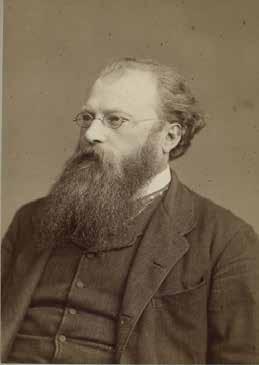
Richter János
Pedig Richter János – a Ring ősbemutatójának majdani karmestere, aki Bülow oldalán a Mesterdalnokok betanításából is oroszlánrészt vállalt – mindent megtett, hogy népszerűsítse nálunk ezt az operát. 1871 őszétől a Budapesti Filharmonikusok élén több Wagner-koncertet is vezényelt, amelyen elhangzott a nyitány és a harmadik felvonásbeli kvintett is. A karmestert – akiből hamarosan a világ legelismertebb dirigense lett – azonban itthon mind több támadás érte, amiért úgymond „tűzzel-vassal a wagnerismust akarja terjeszteni az ifjú magyar fővárosban, melynek nemzeti művészetét jóformán száműzte hangversenyeiről”.
Kétségtelen, hogy Richter sokat buzgólkodott a szeretve tisztelt Mester sikere érdekében itthon és külföldön egyaránt. Egyebek mellett fő szervezője volt az 1872ben létrejött Magyar Wagner Egyletnek, amely téglajegyeken keresztüli gyűjtéssel igyekezett hozzájárulni a Festspielhaus felépítéséhez. Itthon azonban sokan úgy vélték, hogy igazi hazafiak ne a bayreuthi Ünnepi Színházra szórják a pénzt, hanem a hazai operaéletet támogassák adományaikkal. Richter János tehát távozott Pestről, de utóda, Erkel Sándor karnagy – a zeneszerző fia – sem vonhatta ki magát az izmosodó hazai Wagner-kultuszból. 1875 végén maga is elvezényelte az ötöst és a harmadik felvonás előjátékát a Nemzeti Színházban, majd nyolc évvel később ő volt az, aki a mű magyarországi bemutatóját is magára vállalta.
Az első előadásra 1883. szeptember 8-án került sor, alig pár hónappal azt követően, hogy Angelo Neumann „repülő operatársulata” négyestés program keretében Budapestre is elhozta A nibelung gyűrűjét. Míg a Gyapjú utcai Német Színházban az eredeti bayreuthi díszleteket és nemzetközi énekesgárdát felvonultató Ring-bemutató zajos sikert aratott, addig a Nemzeti Színház régi épületében A nürnbergi mesterdalnokok megbukott. A korabeli kritika ugyan többnyire dicsérte Erkel Sándort, a karmestert és a Hans Sachs szerepében fellépő Ódry Lehelt, továbbá elismerően szólt Gassi Ferenc (Walther von Stolzing), Láng Fülöp (Beckmesser) és Szigetiné
Humann Eliz (Éva) alakításáról is, a közönségnek nem sikerült megkedvelnie a darabot. Hamarosan szállóigévé vált Budapesten, hogy a Mesterdalnokok az az opera, amelyben a harmadik felvonásban már többen vannak a színpadon, mint a nézőtéren. Az estéről estére fogyatkozó nézőszám következtében mindössze nyolc előadást ért meg, és egy hónap elteltével le kellett venni a műsorról.
Ha lehet, négy évvel később még szerencsétlenebb volt a felújítás, immár az új Királyi Operaházban. Új díszletek híján a régiekkel bemutatott, csapnivalóan hanyag rendezés nem gyakorolt vonzerőt, s a szereplőgárda is inkább csak öregedett a premier óta, mintsem megújult volna. A kritika megjegyzi, hogy Ódry ezúttal is meggyőző Sachs volt, de az Évát alakító Maleczkynéből, illetve a Walthert éneklő Hajós Zsigmondból „hiányzott a fiatalság”. A felújítás mindössze két estét ért meg, az olcsó helyárak ellenére a nézők alig voltak kíváncsiak a produkcióra. Erkel Sándort ugyan kiváló dirigensnek tartották, de Wagner nem az ő terepe volt. Sem a Mesterdalnokokat, sem A bolygó hollandit nem tudta sikerre vinni, és talán szerencsésebb is, hogy a Ringbe bele sem kezdett. Ez utóbbihoz olyan nagy formátumú személyiségre volt szükség, mint a fiatal Gustav Mahler, míg A nürnbergi mesterdalnokokat majd csak korának legzseniálisabb karmestere, Nikisch Artúr tudta méltó módon előadatni 1895-ben.

A mű azóta is Wagner egyik legkedveltebb darabja a magyar színpadokon is. Az Operaházban eddig tizenegy új betanulásban, illetve felújításban mutatták be, egyebek mellett olyan karmesterekkel, mint Kerner István, Sergio Failoni, Otto Klemperer vagy Lukács Miklós.
Jókai Mór lapja, a Nemzet 1883. szeptember 10-i számában olvashatók a következő sorok:
Az őrjöngő lárma, mely a második felvonás végét oly nevezetessé teszi (Prügelscene), a legnehezebben betanítható darabok közé tartozik, melyeket valaha színpadra vittek. Tizenhárompróbás wagneristáktól hallottam, hogy Wagner maga is kétségbeesett rajta, hogy ezt a monstruosus zenelármát valaha színházi kar be fogja tanulni és hat hetet adott Richternek, hogy ezt az egy számot [a fúgát] betanítsa, de megígérte azt is, hogy ha a betanítás nem sikerül, a mű e helyére más kart fog componálni. Richter [János] fényesen megoldotta feladatát és a mester, midőn a próbateremben először hallotta e számot, magánkívül volt örömében és lelkesedésében kiszaggatta manchettájából a „hattyús inggombokat”, melyeket Lajos király a Lohengrin első előadása után ajándékozott neki, és Richter kezébe tette e szavakkal: Királyom ajándékát jobban meg nem becsülhetem, mint midőn Önt díszítem vele. Erkel [Sándor] oly nagyszerűen dirigált, hogy Wagner, ha még élne, talán nem sajnált volna a mi Sándorunktól egy történelmi jelentőségű „hosentragert”.
Idézi: Haraszti Emil, in: Wagner Richard és Magyarország.
A Magyar Tudományos Akadémia kiadása, Budapest, 1916. 411. o.
Írta: Rockenbauer Zoltán
Interjú Fischer Ádámmal

Miért lehet olyan jól verekedni a Müpában? Miért fontos a suttogás? Mi köze az autóvezetésnek a vezényléshez, a kamarazenének a Mesterdalnokokhoz, és miért lehet zene nélkül is előadni ezt a művet? Apropó, előadás: Fischer Ádám egy ideje ajándékként él meg minden alkalmat, amikor a Mesterdalnokokat vezényli, idén pedig kiderül, egy hosszabb szünet alatt miként érett, alakult, változott az interpretációja.
– Amikor tavaly megkérdeztem Christian Franztól, melyik Wagner-karakterrel beszélgetne el legszívesebben, mosolyogva azt felelte: megkérdezné Niklaus Vogel inasát, milyen betegség terítette le gazdáját, ami miatt távol kellett maradnia a mesterek tanácskozásától. Ön kit kérdezne, és miről?
– Talán az Éjjeliőrt arról, hogy amikor hússzor ismétli el ugyanazt, tudatosítja-e magában, mit énekel, vagy az jár a fejében, hogy holnap mikor kell a feleségével bevásárolni mennie. A Müpa produkciójában ez egyébként egy nevezetes részlet, mert találtunk olyan énekest, Pintér Dömötört, aki tud harsonázni (a harsona Wagnernél az éjjeliőr kürtjét ábrázolja). Ugyanazon a hangon kellene énekelnie, mint amit utána megfúj, de túl mélyen intonál (Wagner így írta meg), a hangszere pedig magasabban szól – ezt persze észre sem veszi. Szóval megkérdezném, tudatában van-e annak, hogy mit és miért énekel, hogyan énekel, vagy teljesen másra gondol, és csak mechanikusan jár a szája.
– Léteznek olyan pillanatok, amikor egy karmester is mechanikusan működik?
– Léteznek, csak tudnia kell időben visszaváltani. Ha például egy rövid frázist meg kell ismételni, de másodszorra már másképp folytatódik, akkor előfordulhat, hogy az énekes megzavarodik, nem tudja, hol tart – ilyenkor vissza kell segíteni, mutat-
ni, hogy „most vigyázz, most ne énekelj, most lépj be”. A sofőrök jól ismerik ezt az érzést: órákon át vezetnek mechanikusan, aztán egyszer csak eléjük ugrik egy állat, amire a másodperc töredéke alatt reagálniuk kell.
– Honnan ered az a hagyomány, hogy a Mesterdalnokokat az operaházakban a főzeneigazgató vezényli?
– Talán onnan, hogy azt gondolják, egy Wagner-művet elvezényelni nagyobb feladat, mint egy Rossini-operát, ez azonban nem igaz. Azért tartom rossznak az ilyenfajta gondolkodásmódot, mert a darabokat és a művészeket is beskatulyázza, hiszen előfordulhat, hogy valakinek jobb érzéke van egy műhöz, mint annak, aki magasabb pozíciót birtokol.
– Mitől olyan különleges ez a mű?
– Az egész operairodalomban nagyon kevés példát találunk arra, hogy egy librettó ennyire magas irodalmi színvonalat képviseljen. A Mesterdalnokokét akár zene nélkül is elő lehetne adni.
– Sőt, volt is erre példa.
– Így van. Ezenkívül csak egy hasonló darab jut eszembe, a Rózsalovag. Most ugyan kicsit saját magam meg az opera műfaja ellen beszélek, hiszen azt szoktam mondani, hogy az opera librettójának sosem szabad túl jónak lennie, mert akkor az emberek rögtön azt mondják, de kár, hogy énekelnek, szeretnék többet érteni belőle… Az azonban, hogy értek-e egy énekest, csak részben függ az énektechnikától, sok múlik azon is, milyen hangfekvésben van megírva a szólam. És e téren Wagner roppant gondosan járt el, kínosan ügyelve arra, hogy mindent érteni lehessen. A Mesterdalnokokban a zene és a szó talán még magasabb szinten kapcsolódik össze, mint a többi Wagner-operában. Persze ezzel nem akarom azt mondani, hogy ez a legkedvesebb Wagner-operám, mert ilyen nincsen! (nevet)
– Pedig majdnem kicsúszott!
– Igen, de tényleg mindig azt szeretem a legjobban, amelyikkel éppen foglalkozom. Ahogyan a Trisztán intim pillanataihoz, úgy a Mesterdalnokokhoz is a kamarazene felől közelítek. Wagner itt kevés eszközzel él, de ha az ember rá tud hangolódni, akkor a legmagasabb rendű élvezetben lesz része.
– Ma az interjúra készülve négyszer egymás után meghallgattam a nyitányt, aztán azt mondtam, köszönöm, most pihennék egyet.
– Hát igen, ez egy speciális és összetett stílus: Wagner a középkori zenét akarja –stilizálva – idézni, de ami megszólal, az természetesen nem középkori zene, hanem amit Wagner idején gondoltak róla. És mondok még valamit: ha a Mesterdalnokok
nyitánya valakinek nem tetszik, abban nem a zeneszerző a hibás, hanem a zenekar és a karmester. Úgy kell eljátszanunk, hogy ne akarják abbahagyni. Fontosnak tartom figyelembe venni az adott zenekar hangzását és stílusát is. A Rádiózenekarral másképp vezénylem, mint egy dán együttessel. Az a feladatom, hogy a célt kitűzzem: érezzék, hol lesz izgalmas a zene, hol vannak a meglepetések, hol a megnyugvások.
Ez jóval kevésbé romantikus muzsika, mint a többi Wagner-opera, a karmesternek kevesebb lehetősége van a rubatókkal játszani, mégis sok finom rubatóra van szükség ahhoz, hogy élő legyen a darab. És persze a 21. századi közönségnek eltérő elképzelései vannak, mint a 19. századinak voltak. A nézőnek mindig van egy előzetes elvárása azzal kapcsolatban, hogy mi fog történni. Az utóbbi száz évben pedig általában az történt, hogy bejött hét órakor, negyed kilenckor kezdődött a szünet, háromnegyedkor a folytatás, és nem sokkal fél tíz után vége lett az előadásnak.
– Mennyiben befolyásolja a szünet az élményt vagy akár az értelmezésünket?
– A hosszú szüneteknek Wagnernél megvan a funkciójuk. Persze csak Bayreuthban tartják őket, meg itt, a Müpában. Operaházakban a kollektív szerződés miatt nemigen lehetséges. A zenekarnak meg a kórusnak az első és az utolsó perc jelöli ki a munkaidőt, ami így nem is dupla, hanem tripla szolgálatnak számítana. Nagyszerű, hogy a Müpában megvalósíthatók a hosszú szünetek, hiszen Wagner maga akarta így.
– A mesterséges intelligencia és a közösségi média korában, amikor a kritikai gondolkodás válságát éljük, a Mesterdalnokok különösen izgalmas és aktuális. Mit gondolunk művészetről, előadásról, eredetiségről? Mi a műalkotás és mi a lopás?
– A kritika és a művészek viszonyáról előadást is tartok a Wagner-napok alatt, hiszen már a Mesterdalnokok megírását is többek között Eduard Hanslick egyik kritikája provokálta ki Wagnerből.
– Ezért lett volna Beckmesser eredetileg Hans Lick. – Így van. Amit Hans Sachs mond – hogy senkin nem lehet számon kérni, amit nem is akar –, a kritika egyik alapigazsága. Minden kritikus felírhatja az ajtófélfájára, még akkor is, ha a művészek valószínűleg mindig meg lesznek sértve, ha rosszat írnak róluk. Ha azonban a kritikus nem értette meg, amit mondani akartak, azért nem feltétlenül ő a hibás – lehet, hogy a művész nem közvetítette megfelelően a mondanivalót. Ezt persze úgysem fogják elfogadni, én pedig mindig idézni szoktam Georg
Kreisler dalát: „az még minden művésznek tetszett, ha a másikról rosszat írtam”.
– Nem is feltétlenül elvárható, hogy a művész kritikához való viszonya objektív legyen.
– Soha nem lesz objektív. Arról is akarok beszélni majd, micsoda gyűlölet áradt a 19. században egyes kritikusok felé. Egyébként Hanslick állítólag büszke volt arra, hogy része volt a Mesterdalnokok létrejöttében, de ennek még utána kell járnom.
– Talán ez az egyetlen megfelelő stratégia, hiszen mi változott volna, ha megsértődik?
– Úgy sejtem, ha Beckmesser megmaradt volna Hans Licknek, akkor annyira azért mégsem lett volna boldog... (nevet)
– Visszatérő érv az is, hogy mégis hány kritikus vonult be a művészettörténetbe…
– Tessék, „Hans Lick” bevonult. A kritikaírás egyébként különös foglalkozás. Gyerekkoromban jól ismertem Kroó Györgyöt. Apámmal jó kapcsolatban volt, de attól fogva, hogy elkezdtem szerepelni, már nem akart találkozni velünk, mert azt mondta, szeretne objektív maradni.
– A tavalyi Wagner-napok előtti beszélgetések során Iréne Theorin és Christian Franz azt mondta, már egyre finomabban közelítenek meg egy-egy szerepet. Mindketten fejlődésnek nevezték, hogy mernek másképp, akár nagyon halkan is énekelni. Ön most hol jár a Mesterdalnokokkal? Mennyivel halkabb, érzékenyebb, mint hat-nyolctíz évvel ezelőtt?
– Azt, hogy az intim pillanatokat ki kell dolgozni, mindig tudtam. Wagnert igazságtalanul vádolják harsánysággal. Hans Sachs például töprengőbb lett. Merek több szünetet tartani, hogy hagyjam elgondolkodni arról, amit mond, mert ő is keresgéli a szavakat, ugyanúgy, mint én. Az öregemberek elfelejtik a szavakat.
– És a tempók miként változnak?
– Egyszerűen szólva: lassítani könnyebb, mint gyorsítani. Gyakran előfordul, hogy fiatal karmesterek csinálnak egy ritenutót, majd nem tudnak visszakerülni, és az előadás lelassul. Ez nagyon nagy hiba. Én már merek bizonyos köztes ütemeket tudatosan gyorsabban vezényelni. Korábban nem mertem, mert nincs odaírva, de most már tudom, hogy ez nem érdekes. Ha annak a két ütemnek kevésbé hangsúlyos a mondanivalója, mint az előzőeknek, akkor lendületesebben vezénylem őket.
– Nem ritka, hogy előadás után egy-egy motívum még hosszan a nézővel marad. Valami, ami más volt, netán olyan horderejű, hogy meg kell dolgoznia magában.
Esetleg olyasmi, ami kimondottan a zenekarra vagy a dirigensre vonatkozik. Önnel is előfordul, hogy egy próbafolyamat végén, miután lement az utolsó előadás, valami még sokáig elkíséri?
– Nagyon gyakran, hiszen a darabokat együtt élem a szereplőkkel. Ahogy idősödöm, mást és mást látok meg egy szerepben, máshová esnek a hangsúlyok. Walther lendületét például most már inkább Hans Sachs szemüvegén át látom, nem úgy, mint ezelőtt harminc évvel. Egy karmesternek persze az előadás alatt úgy kell viselkednie, mint egy sebésznek, és bár engem nem azért fizetnek, hogy élvezzem a zenét, azért mégiscsak tudom élvezni. Amikor eldöntöm, milyen irányba szeretném vinni az előadást, vagy a próbák alatt felfedezem, milyen szépen tudja a klarinétos eljátszani azt a frázist, ha a végét egy kicsit felgyorsítom… Az ilyen felfedezéseknek mindig örülök. Sokszor meg vagyok lepve, milyen új dolgokra bukkanok egy darabban.
– Mi volt a legutóbbi, amit a Mesterdalnokokban felfedezett?
– Ezt nehéz megmondani, mert utoljára a Covid előtt vezényeltem. Az pedig úgy hatott rám, mint amikor az ember átesik egy nagyon súlyos betegségen, felgyógyul, és hirtelen az egész élet ajándék lesz. Szóval talán ezt. Nem veszem magától értetődőnek, hogy itt és most eljátszhatjuk a Mesterdalnokokat, hogy jól érzem magamat, semmi bajom sincs. Azt majd az előadás végén fogom tudni megmondani, hogy mennyire lett más.
– A Parsifalnál egyértelmű volt, miért különleges játszóhely a Müpa, és a Ringben is van több olyan részlet, amit úgy lehet megvalósítani, ahogyan máshol nem. A Mesterdalnokokkal mi a helyzet?
– A verekedési jelenet minden rendezőnek és karmesternek kihívás. A Müpa akusztikájának köszönhetően azonban itt mindenki sokkal plasztikusabban hallja a másikat, nemcsak a verekedők egymást, hanem a zenekar is a verekedőket, és fordítva. A mi rendezésünkben ráadásul van, aki verekszik, és van, aki énekel (persze a közönség ezt nem látja), így még szabadabban tudjuk felépíteni a jelenetet, nekem pedig nem kell folyamatosan azzal foglalkoznom, hogy tartsuk a tempót, különben szétmegyünk, mert mindenki hallja-érzi egymást. Amennyiben egy tér lehetővé tesz ilyesmit, azt kötelességünk kihasználni.
– Azoknak, akik most ismerkednek a művel, miért lehet vonzó 2025-ben a Mesterdalnokok?
– Ezek az operák mindig modellek maradnak, mert alapvető emberi érzésekről szólnak, és minden megváltozhat a világban, de az emberek érzései nem. Ha valakinek megtetszik egy fiatal lány, ugyanolyan lázas bizsergés keríti hatalmába, ha pedig
féltékeny, ugyanúgy féltékeny. A 18. vagy 19. században is ugyanazt a reménykedő izgalmat érezték a fiatalok: „Jaj, most észrevesz-e…?” Olyan nagyszerűen van megírva a darab, hogy mindenki magára ismerhet, főleg a tinédzserek. Mi is emlékszünk még rá, de ők most fedezik fel. És hát néha, bevallom, én most már Beckmessert is értem.
– Ha egyetlen dolgot megváltoztathatna a Mesterdalnokok történetében, mi volna az?
– Néha volt olyan érzésem, hogy ha én lennék Hans Sachs, kicsit később kezdenék tiltakozni meg zajt csapni, és engedném a fiatalokat megszökni… De hát ez a különbség kettőnk között: ő tudja, hogy mi lesz a vége, mert mindent tud. Bölcs ember. – „Komikus és könnyed, bárhol gond nélkül előadható” – ezt írta először Wagner a Mesterdalnokokról. Mi lett ebből a könnyedségből és gond nélküli előadhatóságból?
– Úgy kell előadni, hogy a közönség azt érezze, gond nélkül és könnyedén ment! (nevet) Azt a hatalmas munkát, ami mögötte van, nem szabad észrevennie. Egy izzadságszagú Mesterdalnokok a mű halála. De hát Bartók is úgy nyilatkozott a Zene húros hangszerekre, ütőkre és cselesztára című művéről, hogy nagyon egyszerű, és két próbával meg lehet csinálni. Közben pedig a 20. század egyik legnehezebb darabját írta.
– Mi a Mesterdalnokok előadásának fő nehézsége?
– Az áttetszősége.
– Azért is érdekes, amit mond, mert a sztereotip Wagner-felfogás azt sugallja, állandóan belovaglás van, meg helikopterek. Valójában azonban mindig az zaklat fel a legjobban, ha valami halkan történik.
– Itt például szidhatnám én is a kritikusokat, mert sokáig dolgozom az énekesekkel, hogy suttogjanak, visszafogom a zenekart, eljön a premier, aztán a második előadáson mégiscsak elkezdenek hangosan énekelni. Ez pedig nem mást jelent, mint hogy szólt neki az énektanára, vagy a kritikus azt írta: nem lehet hallani, mert nincs elég hangja. Az én feladatom ilyenkor elérni, hogy ne figyeljenek ezekre a kritikákra. Suttogni nagyon fontos, és kevés énekes van, aki hajlandó rá. Nagyon örültem, hogy Iréne Theorin és Christian Franz megtette, de ehhez partner kell. Olyan ugyanis nincs, hogy ők túl halkak – legfeljebb a zenekar túl hangos.
Az interjút készítette: Csepelyi Adrienn
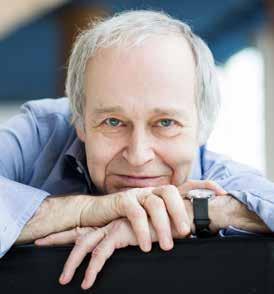
Fischer Ádám 1949-ben született Budapesten, konzervatóriumi tanulmányait követően a Bécsi Zeneakadémián, Hans Swarowsky osztályában szerezte meg karmesteri diplomáját 1971-ben, majd Velencében és Sienában Franco Ferrara mesterkurzusain vett részt. Nemzetközi karrierje 1973-as milánói versenygyőzelmével kezdődött. Pályájának fontos állomásai európai operaházak: Graz, Sankt Pölten, Bécs, Helsinki, München, Freiburg, Kassel, Mannheim.
Volt a budapesti Operaház és a Magyar Rádió Szimfonikus
Zenekarának főzeneigazgatója is. Európa és Amerika nagy operaházainak és koncerttermeinek állandó vendége, rendszeresen vezényelt Bayreuthban. A Müpával az intézmény megnyitása óta szorosan együttműködik, az újévi hangversenyeken Haydn oratóriumai, A teremtés és Az évszakok szólalnak meg vezényletével, 2006ban pedig megalapította és azóta irányítja a Budapesti Wagner-napokat, amelynek produkciói az évek során jelentős nemzetközi megbecsülést vívtak ki.

Tobias Schabel 2019 óta a Bonni Opera együttesének tagja, alakította Ochs báró szerepét A rózsalovagban, a címszerepet a Figaro házasságában, II. Fülöpöt a Don Carlosban és Méphistophélèst a Faust elkárhozásában. Nemrég Hans Sachsként is bemutatkozott Bonnban, illetve Ochsként a Lipcsei Operában. A német basszus fellépett már a Hannoveri és a Berlini Állami Operában, a Salzburgi Ünnepi Játékokon és a milánói Scalában is, repertoárját olyan szerepekkel gazdagítva, mint A varázsfuvola Sarastrója vagy A bolygó hollandi Dalandja. Gyakran kap koncertfelkéréseket is, közreműködött többek között az Éliás, a Paulus, Mozart és Verdi Requiemje, Bach passiói és Beethoven IX. szimfóniája előadásain. Tobias Schabel a Hamburgi Egyetemen diplomázott, és a Hamburgi Mozart-díj birtokosa.

Bretz Gábor Budapesten született. Tanulmányait Los Angelesben kezdte, majd Budapesten folytatta, 2005-ben megnyerte az athéni Maria Callas Verseny nagydíját. Rendszeresen fellép a Magyar Állami Operaházban, ahol a legjelentősebb basszus- és basszbaritonszerepeket formálja meg. Számos külföldi operaházban debütált már: énekelt a milánói Scala, a New York-i Metropolitan és a londoni Covent Garden színpadán, de fellépett Münchenben, Berlinben, Bécsben, Salzburgban, Brüsszelben, Amszterdamban, Palermóban, Nápolyban, Bolognában, Hamburgban, Aix-en-Provence-ban, Tokióban és Sydney-ben is. A kékszakállú herceg vára címszerepét rendszeresen énekli koncerten és szcenírozott előadásokon. 2018 óta tanít a Liszt Ferenc Zeneművészeti Egyetemen.

Bo Skovhus az Aarhusi Konzervatóriumban és a Koppenhágai Királyi Akadémián végzett, majd New Yorkban képezte tovább magát. A dán bariton olyan szerepek megformálójaként lépett már színpadra, mint Reimann Lear királya, Beckmesser, Wozzeck, Titus (Michael Jarrell: Bérénice), Dr. Schön (Lulu), Mandryka és Anyegin, láthatta őt többek között a Párizsi Opera, a Bécsi és a Bajor Állami Opera, a Bayreuthi Ünnepi Játékok, a Verbier-i Fesztivál, a Maggio Musicale Fiorentino és a Carnegie Hall közönsége. Az utóbbi időben szerepelt a genfi Rózsalovag-produkcióban, A Makropulos-ügyben Amszterdamban, a Capriccióban a Salzburgi és az Edinburgh-i Fesztiválon, valamint Kurtág György A játszma vége című operájának előadásán a Berlini Állami Operában. Az osztrák és a bajor kamaraénekesi cím birtokosa.
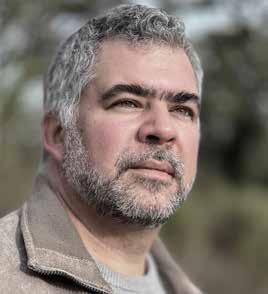
Sebestyén Miklós a bécsi Belvedere Énekversenyen elért sikere után olyan jelentős helyszíneken lépett fel, mint a New York-i Metropolitan, a milánói Scala, a londoni Covent Garden, a moszkvai Bolsoj, a Welsh National Opera, a madridi Teatro Real, a Theater an der Wien, a Montreali Opera, a Komische Oper Berlin, az Oslói Opera, a lisszaboni Teatro Nacional de São Carlos és a Bregenzi Ünnepi Játékok. A Magyar Állami Operaházban 2011-ben debütált. Pályája során olyan karmesterekkel és rendezőkkel dolgozott, mint
Riccardo Chailly, Carlo Rizzi, Fabio Luisi, Lorin Maazel, Fischer Ádám, Robert Carsen, Kasper Holten, David Pountney, Philippe Arlaud, Giancarlo del Monaco vagy Peter Konwitschny. Jelentősebb szerepei: Kékszakállú, Figaro, Leporello, Sarastro, Don Alfonso, Pizarro, Gremin herceg.
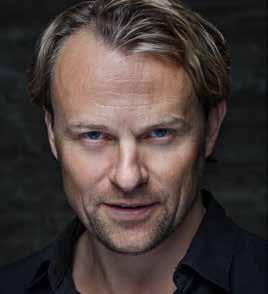
A dán tenor, Magnus Vigilius olyan operaházak rendszeres vendége, mint a berlini Deutsche Oper, a drezdai Semperoper, a Zürichi Opera, a Genfi Nagyszínház, a stockholmi és a koppenhágai Királyi Opera, valamint Lipcse, Nápoly, Strasbourg, Prága, Amszterdam, Brüsszel dalszínházai, de fellépett a Bayreuthi Ünnepi Játékokon is. Szerepei közé tartozik Lohengrin, Walther, Siegmund és Siegfried, Erik, Steva (Jenůfa), Boris és Tichon (Kát’a Kabanova), Albert Gregor (A Makropulosz-ügy), Cavaradossi vagy Bacchus (Ariadné Naxosz szigetén). Koncertezett többek közt Japánban, Németországban, Svájcban és Dániában. Két díjat is nyert a Lauritz Melchior Nemzetközi Énekversenyen, Siegmund alakjának megformálásáért pedig 2018-ban ő kapta a dán Reumert-díjat.
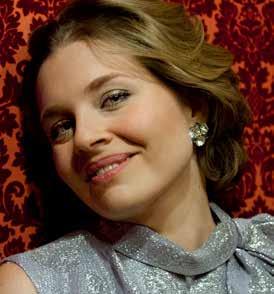
Pasztircsák Polina a 2009-es Genfi Nemzetközi Énekversenyen aratott győzelmével alapozta meg pályáját, mára Európa-szerte sokat foglalkoztatott opera-, koncert- és dalénekes. Gálákon szerepelt Plácido Domingo, José Carreras, Erwin Schrott és José Cura partnereként, de dolgozott Riccardo Chaillyval, René Jacobsszal, Michael Sanderlinggel, Alekszandr Szladkovszkijjal, Sabine Meyerrel, rendszeres kamarapartnere Jan Philip Schulze zongoraművész. Fellépett a gstaadi Menuhin Fesztiválon, a barcelonai Liceuban, a Genfi Nagyszínház Ring-produkciójában, visszatérő vendége a milánói Scalának, a drezdai Semperopernek, a Budapesti Wagner-napoknak és a Magyar Állami Operaháznak. Utóbbi 2016-ban és 2024-ben is kamaraénekesi címmel ismerte el. Hangfelvételeket készített a Sony és a Harmonia Mundi kiadónak.

Cornel Frey a Luzerni Gyermekkórusban kezdte pályáját, majd Bernben képezte magát Jakob Stämpflinél. Egy évig a Zürichi Operastúdió tagja volt, majd 2003-ban Wuppertalba szerződött, ahol számos karakterszerepet játszott. 2005-ben Nikolaus Harnoncourt vezényletével mutatkozott be a Bécsi Ünnepi Heteken. 2012 óta a Deutsche Oper am Rhein tagja (főbb szerepei: Mime, Pedrillo, a Jancsi és Juliska Boszorkánya, az Ariadné Naxosz szigetén Brighellája), de énekelt a Bajor Állami Operában, a Hamburgi Operában, a Luzerni Fesztiválon, a Styriarte Fesztiválon, dolgozott Wolfgang Gönnenweinnel, Alois Kochhal, Dan Ettingerrel, Antonio Pappanóval is.

A vajdasági Kikindán született tenor, Kiss Tivadar 2010ben végzett a Zeneakadémián Kovalik Balázs és AlmásiTóth András osztályában, ám addigra már sikerrel mutatkozott be az immár legendás Mozart-maraton Figaro házassága-előadásában a Budapesti Tavaszi Fesztiválon, az Anyegin Monsieur Triquet-jeként pedig még 2009-ben debütált a Magyar Állami Operaházban. 2011-ben elnyerte az Opera Juventus-díját, és budapesti működése mellett gyakori közreműködője szegedi, miskolci és pécsi operaprodukcióknak is. Több évadon át társulati tagként, majd vendégművészként rendszeresen fellépett a hannoveri operában, de többször szerepelt már Pilsenben, Avignonban és Mannheimben is.
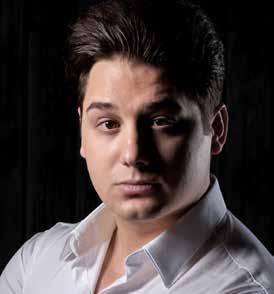
Bartos Barna szülővárosában, Sepsiszentgyörgyön kezdte zenei tanulmányait, majd diplomáját a budapesti Zeneakadémián szerezte meg, ahol énektanára Halmai Katalin volt. Részt vett Claudio Di Segni, Marton Éva és Rost Andrea mesterkurzusain is, az utóbbi években pedig Komlósi Ildikó irányításával tökéletesíti tudását. Olyan kiváló művészekkel, karmesterekkel és rendezőkkel dolgozott együtt, mint Szinetár Miklós, Calixto Bieito, Almási-Tóth András, Michael Boder vagy Kovács János. A Magyar Állami Operaházban 2020-ban debütált, kisebb szerepek mellett énekelte a Rigoletto mantuai hercegét és a Gianni Schicchi Rinuccióját is. 2021-ben megkapta a Fischer Annie-ösztöndíjat.
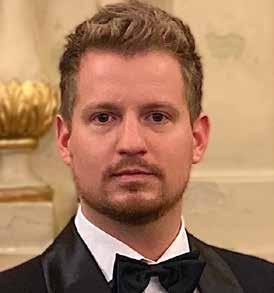
Bodolai Péter Dunaföldváron kezdett zongorázni, majd orgonálni és kántorizálni tanult. A fiatal tenor 2014 óta folytat magánénekesi tanulmányokat Orth Miklósnál, de részt vett Gianluca Terranova több mesterkurzusán is, emellett 2016-ban járműmérnökként szerzett diplomát a Budapesti Műszaki és Gazdaságtudományi Egyetemen. Az olaszországi Fiorenza Cedolins Énekverseny és a 2024es Simándy József Nemzetközi Énekverseny különdíjasa.
Koncerténekesként Magyarországon kívül fellépett Olaszországban, Erdélyben, Szlovákiában, Angliában és Németországban.
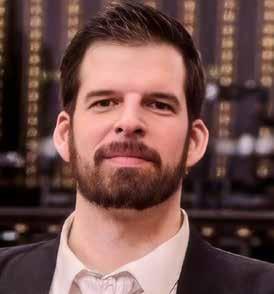
Dani Dávid a Liszt Ferenc Zeneművészeti Egyetemen szerzett énekművészi, majd magánénektanári diplomát 2015ben, emellett olyan világhírű művészek mesterkurzusain vett részt, mint Claudio de Segni, Dénes István, Gulyás
Dénes, Jevgenyij Nyesztyerenko, Kurt Rydl, Komlósi Ildikó vagy Marton Éva. Fellépett Dvořák és Rossini Stabat Materében, Verdi és Mozart Requiemjében, valamint Beethoven, Haydn, Liszt, Puccini és Schubert miséinek szólistájaként. A fiatal basszust Sarastro, Seneca, Sparafucile, Don Basilio, Osmin, Ramfis és Arkel szerepében láthatta a Szegedi Szabadtéri Játékok, a Margitszigeti Szabadtéri Színpad, a Miskolci Operafesztivál, a Román Nemzeti Opera, a bécsi Musikverein és MuTh koncertterem, az Opera Fuerteventura, valamint a Magyar Állami Operaház közönsége.
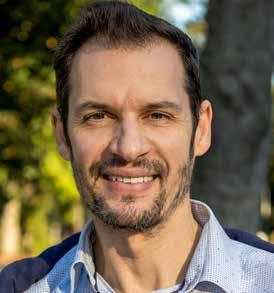
Bakonyi Marcell a Stuttgarti Zeneakadémián Hamari Júlia tanítványa volt, diplomázása óta a győri születésű basszbariton a pesarói Rossini Fesztiválon, Salzburgban, Nürnbergben, Oslóban és Zürichben is nagy sikerrel szerepelt. Az Oláh Gusztáv-emlékplakett díjazottja. 2011-ben a Bánk bán II. Endre királyaként mutatkozott be a Magyar Állami Operaházban, s az elmúlt évek során Porgy, Escamillo, Musztafa bég (Rossini: Olasz nő Algírban) és Leánder (Tallér Zsófia: Leánder és Lenszirom) szerepében is találkozhatott már vele a budapesti közönség.

Gál Erika a Magyar Állami Operaház tagja, az Oláh Gusztávemlékplakett, a Komlóssy-díj és a Závodszky Zoltán-díj birtokosa. 2001-ben elnyerte a Wagner Társaság bayreuthi ösztöndíját. Visszatérő vendég volt a Miskolci Nemzetközi Operafesztiválon, Carmenként mutatkozott be a Bukaresti Operafesztiválon, Amnerisként a Szegedi Szabadtéri Játékokon. Fellépett Plácido Domingo, José Cura, Renato Bruson, Anja Silja partnereként. 2018-ban a New York-i, 2019-ben pedig a tel-avivi közönség láthatta Goldmark
Sába királynője című operájának címszerepében, a Magyar Állami Operaház produkciójában. Flosshilde, Griemgerde, Erda és az 1. norna szerepében rendszeresen fellép a Budapesti Wagner-napokon.

Pintér Dömötör zongora-, harsona-, majd gitártanulmányok után lett hivatásos énekes. Előbb a Magyar Rádió Énekkara, majd a Honvéd Férfikar tagja volt, 2011 februárja óta pedig a Nemzeti Énekkarban énekel. Állandó közreműködője a Purcell Kórus és a Tomkins Énekegyüttes koncertjeinek, de éveken át volt az Octovoice a cappella jazzegyüttes basszusa is. Szólistaként Vencellin és a Kikiáltó szerepével debütált Erkel Ferenc István király című operájának 2010-es előadásában, azóta a Müpától a Zeneakadémián keresztül az Erkel Színházig számos koncert- és operaszínpadon hallhatta a közönség Mozart, Verdi, Puccini, Erkel, Richard Strauss vagy Gyöngyösi Levente műveiben. Visszatérő szereplője a Budapesti Wagner-napoknak is.

Dobák Attila Budapesten született, énektanulmányait „A három tenor” koncertfelvételeinek hatására kezdte a Bartók Béla Zeneművészeti Szakközépiskolában, majd Olaszországban és az Egyesült Államokban képezte tovább magát. Számos amerikai fellépés után itthon Kodály Zoltán Háry Jánosának címszerepében figyelt fel rá a közönség a 2017-es Budapesti Tavaszi Fesztiválon. Nem sokkal később debütált a Magyar Állami Operaházban, ahol a Bohémélet, a Carmen, Az árnyék nélküli asszony és az Olasz nő Algírban előadásain volt látható.
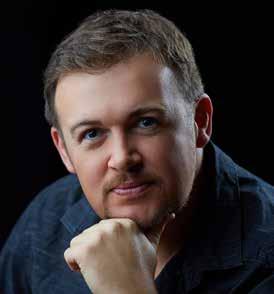
Újvári Gergely Kárpátalján született 1985-ben, énektanulmányait magánúton végezte. Huszonegy évesen lett a debreceni Csokonai Színház énekese, 2012 óta tagja a Magyar Állami Operaháznak, előbb kórusénekesként, majd szólistaként. 2014-ben kapta első főszerepét a János vitézben, repertoárján főként lírai tenorszerepek találhatók. Az Opera társulatával fellépett Prágában, Varsóban, Pozsonyban, Kolozsvárott, valamint a legtöbb magyar nagyvárosban, rendszeresen vesz részt operettgálákon és dalesteken is.
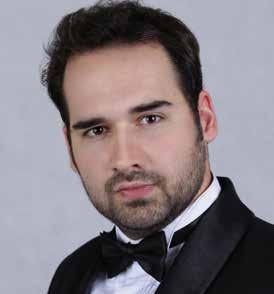
Endrész Ferenc 2021-ben szerezte meg diplomáját Fried Péter növendékeként. Zeneakadémiai tanulmányai alatt részt vett Francisco Araiza és Iris Vermillion mesterkurzusán is, szólót énekelt Beethoven IX. szimfóniájában, Mozart és Fauré Requiemjében, de fellépett A varázsfuvola Papagenójaként, illetve Julian Philips The Yellow Sofa című operájának magyarországi bemutatóján is. Énekelt a Pécsi Nemzeti Színházban, valamint a Magyar Állami Operaház több produkciójában (Dead Man Walking, Salome, Rinaldo), Mozart A színigazgató című operájában a címszerepet alakította.
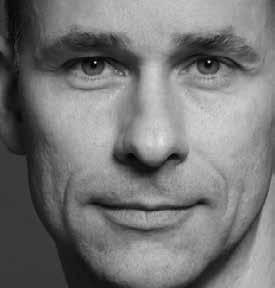
Dirk Becker a Salzburgi Mozarteumban szerzett diplomát, azóta szabadúszóként operák, színházi, balett- és musicalelőadások díszleteit és jelmezeit tervezi. Szorosan együttműködik többek közt Michael Schulzcal, akivel A nürnbergi mesterdalnokokon kívül dolgozott a weimari Nemzeti Színház Ring-, a drezdai Semperoper Salome-, illetve a linzi Landestheater Elektra-produkciójában is. További fontosabb munkái: Armida (Salzburgi Ünnepi Játékok), Homburg hercege (Theater an der Wien), Orlando furioso (Frankfurt), Alceste (Aix-en-Provence, Koppenhága, Bécs), Trisztán és Izolda (Nürnberg), Parsifal (Stockholm), Szerelmi bájital (Drezda).
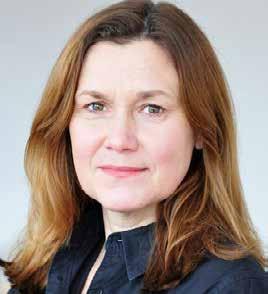
Renée Listerdal Svédországban született, és Firenzében tanult jelmeztervezést. 1992 óta szabadúszó. Dolgozott többek közt Hamburg, Bécs, Stuttgart, Mannheim, Essen, Kassel és Dortmund színházaiban, a Bonni Operában, a berlini Deutsche Operben, a müncheni Staatsoperben és a drezdai Semperoperben. Olyan produkciókhoz tervezett jelmezeket, mint például A bűvös vadász, a Manon Lescaut, a Carmen, a Rigoletto, az Aida, a Don Giovanni, az Idomeneo vagy a Szerelmi bájital. Hosszú együttműködés fűzi Michael Schulzhoz, az általa rendezett Ring jelmezei is az ő tervei alapján készültek.
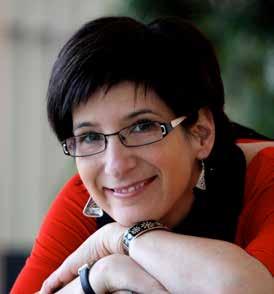
Gábor Sylvie a würzburgi Julius Maximilian Bajor Állami Egyetemen szerzett mesterdiplomát, a színpadi mesterséget pedig ösztöndíjasként Padovában tanulta. Pályáját rendezőasszisztensként kezdte, majd a berlini Komische Operbe, illetve a Stuttgarti Állami Operához szerződött játékmesterként. 2011 és 2013 között szabadúszóként dolgozott Ausztriában, Ománban, Kínában és Németországban. 2013-tól a Magyar Állami Operaház játékmestere. 2015 óta önállóan is rendez (Puccini: Tosca, Bach: János-passió, Beethoven: Fidelio, Suppé: A szép Galathea, Szilágyi: Leánder és Lenszirom), de a Müpa felkérésére több beavató operaelőadást is színre vitt. 2023-ban a Budafoki
Dohnányi Zenekar Sok hűhó semmiért című produkcióját rendezte.

Michael Schulz Hamburgban tanult színház- és operarendezést. Dolgozott Kasselben és Essenben, majd a Weimari Nemzeti Színház operaigazgatója volt, ahol a Ringet is színpadra állította. 2008 óta a Gelsenkircheni Musiktheater intendánsa, a 2025/2026-os évadtól a Saarbrückeni Állami Színház kinevezett igazgatója. Együttműködött többek közt a Deutsche Oper am Rheinnel, a linzi Landestheaterrel, a Lipcsei Operával, a drezdai Semperoperrel, a Pekingi Zenei Fesztivállal és a Salzburgi Húsvéti Ünnepi
Játékokkal, ahol Wagner születésének bicentenáriuma alkalmából a Parsifalt rendezte. Az utóbbi években Verdi-, Puccini-, Boito-, Johann Strauss-, Sosztakovics-, Janáček-, Kurt Weill- és Richard Strauss-műveket vitt színre nagy sikerrel.
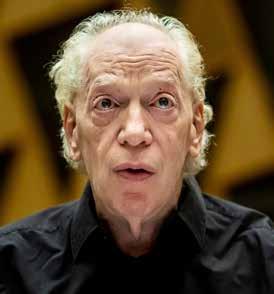
Kovács János 1973-ban szerzett karmesteri diplomát a Liszt Ferenc Zeneművészeti Főiskolán. A Magyar Állami Operaházban korrepetitorként, karmesterként, vezető, illetve első karmesterként és főzeneigazgatóként is dolgozott az elmúlt évtizedek során. 1979 és 1981 között zenei asszisztens volt a Bayreuthi Ünnepi Játékokon. Vezető magyar szimfonikus zenekarok élén világszerte fellépett. Számos hangfelvételt készített világhírű szólisták közreműködésével. Kossuth- és Bartók–Pásztory-díjas.

Pad Zoltán a budapesti Zeneakadémián diplomázott, majd Münchenben képezte tovább magát. 2009 és 2014 között a Debreceni Kodály Kórus élén állt, 2014 óta a Magyar Rádió Énekkarának vezető karnagya. Karigazgatóként együtt dolgozott többek között Simon Rattle-lel és a Berlini Filharmonikusokkal, Daniel Hardinggal, Eötvös Péterrel és a Bécsi Filharmonikusokkal. Nemzetközileg magasan jegyzett karnagy, aki olyan kiváló együtteseket vezényelt, mint a stuttgarti SWR Énekegyüttes, a lipcsei MDR Rádiókórus, a hamburgi NDR Énekegyüttes, a Francia Rádiókórus és az Ír Kamarakórus. Liszt- és Lajtha-díjas.
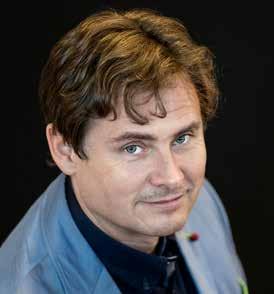
Somos Csaba karvezetői, majd karmesteri diplomáját a Liszt Ferenc Zeneművészeti Egyetemen szerezte, tanulmányai mellett részt vett Johannes Moesus, Jürgen Jürgens és Jurij Szimonov mesterkurzusain is. Tizenhét évig volt a Vasas Művészegyüttes Énekkarának karnagya, valamint 2002 és 2017 között az általa alapított Vass Lajos Kamarakórust vezette. Volt a debreceni Csokonai Színház és a Pécsi Nemzeti Színház zeneigazgatója, a Magyar Rádió Énekkarának vezető karnagya. Vendégkarmesterként, illetve -karnagyként fellépett Olaszországban, Spanyolországban, Romániában, Ausztriában, Németországban, Japánban és Kínában. Liszt-díjas érdemes művész, a Zeneakadémia tanára, zenei versenyek és fesztiválok zsűritagja, a KÓTA társelnöke. A Nemzeti Énekkar élén 2016 óta áll.
A Magyar Rádió Szimfonikus Zenekara Dohnányi Ernő kezdeményezésére alakult meg 1943-ban, s azóta nemzetközi rangot és tekintélyt szerzett bel- és külföldi hangversenyeivel, lemezeivel és rádiófelvételeivel. Az együttes négy kontinens több mint ötven országában öregbítette már a magyar zenekultúra hírnevét. Kiegyenlített hangzását, hajlékonyságát, valamint a magyar kortárs zene népszerűsítése és rögzítése terén elért eredményeit egyöntetűen méltatják a világ vezető kritikusai, a vendégkarmesterek és a zenekarral dolgozó szólisták, zeneszerzők. A Budapesti Wagner-napokon a kezdetek óta közreműködik az együttes, itt is jelentős sikereket aratva. A Magyar Rádió Művészeti Együtteseinek (MRME) főzeneigazgatója Héja Domonkos Liszt-díjas, Gundel művészeti díjas és Junior Prima díjas karmester.

A Magyar Rádió Énekkara 1950-ben alakult, idén ünnepli fennállásának 75. évfordulóját. Az együttes repertoárja felöleli a klasszikus kórusmuzsika minden területét, beleértve az opera- és oratóriumirodalmat is. Előadásain kortárs magyar szerzők darabjai is rendszeresen szerepelnek. A kórus rangos nemzetközi fesztiválok gyakori meghívottja, fellépett már a Salzburgi és a Bécsi Ünnepi Játékokon is. Az együttest többek közt olyan híres vendégkarmesterek vezényelték, mint Lamberto Gardelli, Lovro von Matačić, Kurt Masur, Yehudi Menuhin, Giuseppe Patanè, Helmuth Rilling és Jurij Szimonov.
A Nemzeti Énekkar (Állami Énekkar néven) 1986-ban jött létre, élén több mint negyedszázadon át Antal Mátyás töltötte be a vezető karnagyi pozíciót. Ez idő alatt az együttes Magyarország egyik vezető hivatásos kórusává vált, olyan oratóriumkórussá, amely nemcsak testvérzenekarával működik együtt, hanem az a cappella művek előadásában is kimagasló produkciókat nyújt, legyen szó barokk zenéről vagy kortárs kompozíciókról, de a jazz műfaja sem ismeretlen számára. Sikerrel szerepeltek Európa jó néhány nagyvárosában, valamint Japánban, Izraelben és Törökországban is.
A karigazgatói tisztet 2016 januárja óta Somos Csaba tölti be.
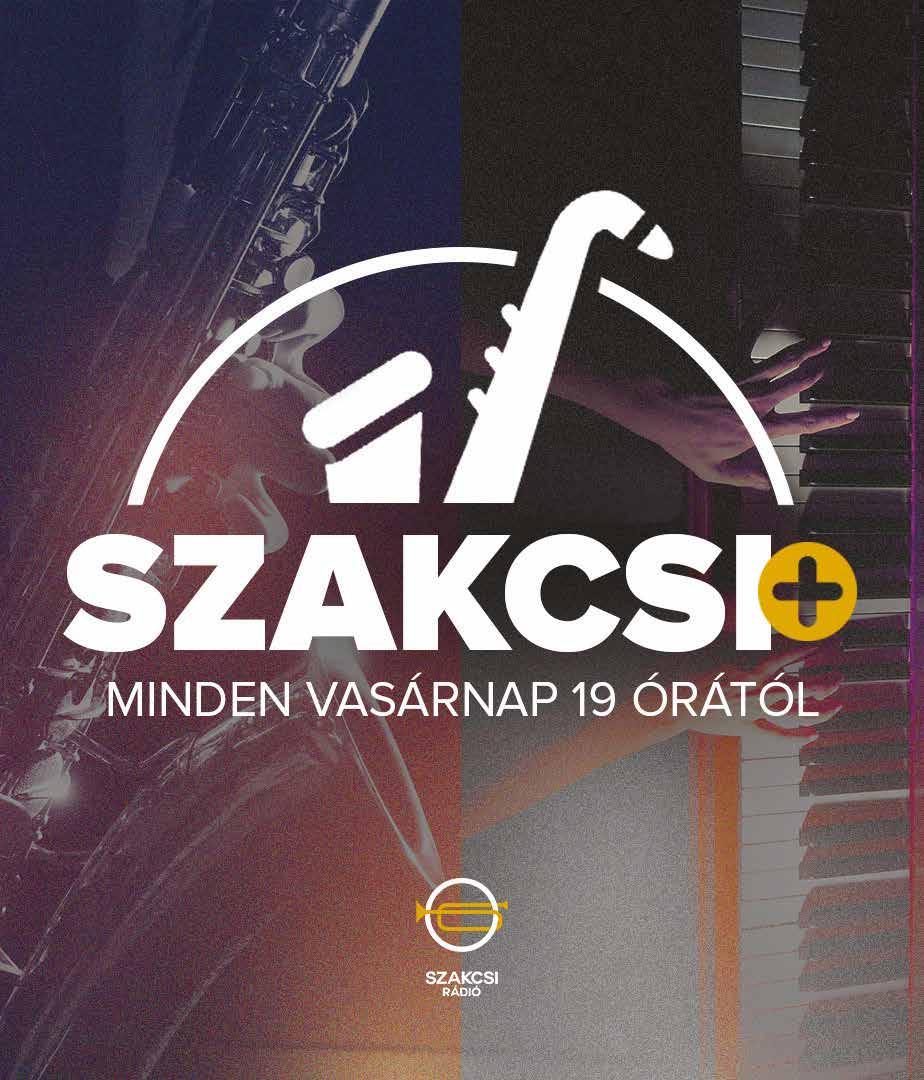

2026. június 5., 30.
WAGNER: PARSIFAL 2026. június 12.
CAMILLA NYLUND ÉS
HELMUT DEUTSCH
DALESTJE
2026. június 18., 25.
WAGNER: A RAJNA
KINCSE
2026. június 19., 26.
WAGNER: A WALKÜR 2026. június 20., 27.
WAGNER: SIEGFRIED 2026. június 21., 28.
WAGNER: AZ ISTENEK
ALKONYA
Nuremberg in the mid 16th century
St. Katherine’s Church in Nuremberg. Arriving in Nuremberg, Walther von Stolzing, a young Franconian knight, falls in love with Eva, daughter of goldsmith Veit Pogner. From Eva’s nurse Magdalene, he learns that the girl is no longer available, as the victor of the guild’s song contest on St. John’s Day, the following day, will win the beautiful and wealthy girl’s hand in marriage.
Walther, in order to earn a place in the song contest, immediately decides to qualify as a mastersinger. From David – apprentice to the shoemaker Hans Sachs – he receives a “quick lesson” on the rules of the master-songs. He must sing an audition before the masters, with enforcement of the rules falling on the town clerk Beckmesser, an old bachelor who himself is vying for Eva’s hand. Walther’s unorthodox song does not comply with the strict regulations, and Beckmesser gloatingly tallies up his errors. The mastersingers reject Walther, with only Hans Sachs, who has been taken with the singular tone of the song and the personality of the knight, taking a stand to support him.
A Nuremberg street in front of Pogner’s and Sachs’s houses. Evening approaches. Eva learns from her father of Walther’s failure. The two lovers decide to elope, but the presence of Sachs, who has been working in front of his workshop and who also harbours feelings for Eva, presents an obstacle to their plans. Beckmesser arrives to serenade Eva, but does not notice that Eva has meanwhile exchanged places with Magdalene. In any case, he is unable to start his song, as Sachs’s noisy hammering and cheerful cobbler’s song drown out every attempt. Finally, he sings the song to solicit Sachs’s opinion. But the shoemaker does not put down his work, instead marking the errors with liberal blows of his hammer.
The noise wakes David, who believes Beckmesser is serenading Magdalene, the object of his own affection. An argument breaks out, which degenerates into a brawl as the citizens of Nuremberg, disturbed from their evening rest, also join into the melee.
Beckmesser is given a sound thrashing until the night watchman comes to put an end to the fighting.
Hans Sachs’s workshop, dawn of St. John’s Day. David begs forgiveness from Sachs for the events of the preceding night. Walther, who ended up spending the night at the cobbler’s, relates his dream, which Sachs helps him to work into a song according to the rules of the mastersingers. Beckmesser, unexpectedly dropping by to visit the cobbler, finds the verses of the song written in Sachs’ handwriting, and concludes that Sachs is also planning to enter the contest for Eva’s hand. He attempts to steal the paper, but the shoemaker notices and, with unexpected generosity, presents it to the clerk as a gift. Beckmesser departs gleefully in the expectation that with “a poem from Hans Sachs” he is certain to emerge as winner of the contest.
Before long, Eva also arrives in the workshop and, under the pretext of a complaint about her new shoes, attempts to sound out the cobbler. The aging Sachs, however, wisely concedes the young girl to the young knight. In the famous quintet, he confers his blessing upon the two lovers, as well as on David and Magdalene.
A meadow near Nuremberg. The song contest starts. The guilds and the city’s citizenry hold processions. Although Beckmesser has memorised the verses, he is at a loss to perform them and fails in disgrace. At Sachs’s behest, they listen to the song being sung by the true composer, Walther. His performance amazes everyone, and he wins Eva’s hand. At first, Walther rejects the offer of the mastersingers to make him a member of their guild, but Sach’s wise words on honouring craftsmanship and the need for the continuity of the cultural traditions of German art pacify the knight’s sense of injury by the citizens of Nuremberg. Eva places a laurel wreath of victory on Sach’s forehead who places the golden Masterhood Medal around Walther’s neck amid cheering from the people.
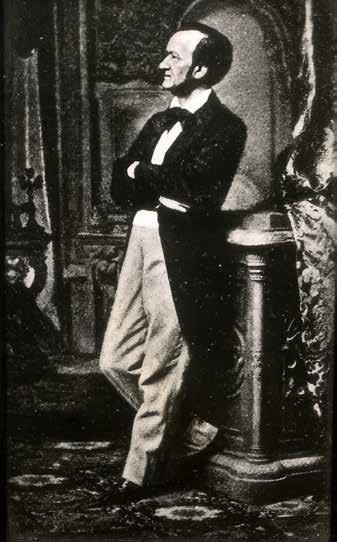
It just so happened that, in the summer of 1835, the 22-year-old conductor of the Magdeburg theatrical company was sent by his director on a recruiting tour to bring new blood to the desperately struggling company. The young man made his way through numerous cities, visiting Bayreuth and Nuremberg among others. He would have had no inkling that the small Bavarian community would one day become his final resting place, but the nearby city of Nuremberg, with its great history, clearly exerted a pull on him that remained etched in the dramatist’s creative consciousness. As his sister lived in the city, he stayed for several days, choosing to spend much of this time in the taverns of the town with his brotherin-law. One evening, he was introduced to a fine fellow of a master carpenter who fancied himself as a singer and did not take much persuasion to take to the stage. The crowd’s playful teasing of his terrible singing quickly escalated into a noisy affair. The dissenters disturbed the peaceful city’s tranquillity and the matter soon came to blows.
The novice composer Richard Wagner, who at the time only had only written a single theatrical work, the unperformed Die Feen, could hardly have foreseen how this somewhat grotesque street brawl was the embryo of the centrepiece – in the form of a double fugue – to a great opera to be premièred a good 35 years later, but he did store away the mood of the evening. He returned to Madgeburg, where the company went bankrupt six months later, although it did perform as a farewell present Wagner’s second opera, Das Liebesverbot, which he had composed in the meantime. (Naturally, the work was a failure.)
The idea behind the libretto of Die Meistersinger von Nürnberg came to Wagner only ten years later. By that point, he was already able to boast the lofty title of Court Kapellmeister of the Dresden Opera and had just finished the orchestration of his fifth opera, Tannhäuser, and was already working on his next work, Lohengrin. In the summer of 1845, the overworked composer set aside his work under orders from physicians and went to the popular Marienbad spa to rest, where he passed the time reading, among other works, Georg Gottfried Gervinus’s Geschichte der poetischen National-Literatur der Deutschen (History of German Literature). He was inspired by the character of Hans Sachs, the shoemaker and poet who lived in Nuremberg in the 16th century, and immediately began to commit the first prose outline of Die Meistersinger to writing. The kernel of the story was quite reminiscent of that of Tannhäuser, only this time the Minnesängers and their song contest at Wartburg Castle for the hand of Elisabeth was replaced by the rivalry between the Master Singers of Nuremberg, that is, the heroic world of myth was brought down to earth and the jovial burghers of Bavaria. Wagner did not intend for it to be anything more than a cheerful satire, an easy sequel to his romantic opera, but he eventually put it to one side and returned to writing the libretto for Lohengrin. It was not until 16 years later that he took up the story of Hans Sachs again.
In actual fact, it was also Tannhäuser that rekindled his enthusiasm for Die Meistersinger the second time around, at least in part. The three performances of Tannhäuser in the spring of 1861, with which he had planned to conquer Paris, had proved to be a true baptism of fire. In order to satisfy local tastes in the French capital, he had revisited and revised the piece, which had already been premièred in Dresden, and composed a ballet sequence to include in it. The ensuing story of one of the biggest disasters in musical history is well known: Wagner surprised the Parisian audience by writing the Bacchanalia into the first act, which the toffs of the Jockey Club resented him for, since they only arrived at the opera for the second act to glimpse the shapely legs of the ballerinas. News of these troubles reached certain political circles, where it was decided to take advantage of the situation and protest against the piece to stoke conflict with Napoleon III. In the wake of the scandal, which had been growing in intensity by the day, Wagner withdrew his score to Tannhäuser.
Struggling with the composition of the Ring Cycle, the Paris fiasco, debts, and difficulties in his private life, the stateless, wandering Wagner pitched a surprisingly light-hearted idea – in stark contrast to his dire situation – to his publisher in October 1861: “I have no wish – at this time and with this aim – to return to the great Nibelungen work for the moment. For that I would prefer to wait for the arrival of a period of external success […], and therefore consider it a capital idea most suited to my mood and circumstances that you will shortly be receiving the treatment of a popular comic opera. I have already prepared the complete outline for it. The title of the opera will be the Die Meistersinger von Nürnberg, and its hero the kind-hearted poet, Hans Sachs.”
Wagner was palpably enthusiastic about the new plan, which, in his own words, “required neither a Heldentenor nor a dramatic soprano [and which was] comic and light, and could be presented anywhere without difficulty.” The publisher must also have been swayed by this argument as he promised a significant sum of money. Before he could return to Paris, where he planned to write the libretto, Wagner was invited by the generous Wesendoncks to visit his beloved Venice, where he himself said he had been inspired to compose after viewing Titian’s famous painting The Assumption of the Virgin. On the return journey by train to Vienna, he also started to mull over the music. “All through the long voyage, Meistersinger for the first time started to take on musical life within me, whereas before I had carried it with me only in the form of the poem that was its earliest draft. With perfect clarity, the main theme of the C major overture sounded inside me,” he wrote in his memoirs. As if wishing to compensate for the earlier failure, he wrote his gigantic libretto with its praise of German art in the French capital in a little over two months.
The final creation turned out to be anything but light and possible to perform without difficulty. The third act alone grew to be as long as an average opera, and became something of an ordeal for the baritone playing Sachs. There also emerged in it a comedic element, but this “comedy” comes across as good-naturedness tempered with resignation much rather than unrestrained jest and laughter. Later, even Wagner himself marvelled at what his original concept had been transformed into by his own hand: “The reason now is clear to me, why the cheerful mood which sought to vent itself in the conception of the Meistersinger could make no lasting stay with me. At that time, it took alone the shape of Irony, and, as such, was busied more
with the purely formal side of my artistic views and aims than with that core of Art whereof the roots lie hid in Life itself.”
There is no question that the 1845 draft written at the age of 32 did not yet include the motif of the prudent renouncement of love: For this, Wagner first had to wrestle with Tristan and Isolde’s all-consuming and deadly passion. It was in Venice – where the composer would draw his last breath on a February day 22 years later – that Wagner buried his feelings for Mathilde Wesendonck, out of which the dark musical drama of Tristan und Isolde was born. Wagner originally intended Die Meistersinger to be a reprise of Tannhäuser, but it eventually emerged as the counterpoint to Tristan und Isolde – at least as far as its autobiographical, therapeutic aspects were concerned. To prevent any doubt, he wrote in the third act, and even composed musically, the lament of King Mark, whereas Hans Sach, with the insight of those who have experienced much, gently dismisses Eva and concedes her to the younger Walther:
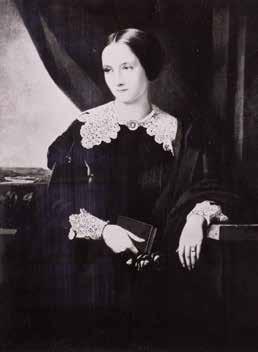
My child, of Tristan and Isolde I know a sad tale:
Hans Sachs was clever and did not want anything of King Mark’s lot.
It was high time that I found the right man; otherwise I would have run right into it.
It is an aesthetic flaw in Wagner’s life story that, although he did let go of his own Isolde, Mathilde Wesendonck, he also seduced the wife of his most faithful friend Hans von Bülow, Cosima, who was also the daughter of Ferenc Liszt.
However, there is a second reading of Die Meistersinger that is perhaps even more significant than the analysis of an aging man’s romantic dilemmas, namely the exploration of the very essence of national art. Here, the original intention – the light, comical nature of the work – genuinely does return. Wagner would
subsequently almost exclusively compose only music dramas and philosophical works, and not a single opera buffa. Thomas Mann wrote, revealingly, “We see evidence of his greatness in how he would like to adapt to the world – but is unable to do so! He wanted to write a small-scale comic opera, a satirical piece set alongside Tannhäuser for his own and the audience’s relaxation, striving, with the best of intentions, for lightness and down-to-earth enjoyment – and what was it that emerged from all of this? Die Meistersinger von Nürnberg. […] One cannot make oneself smaller than one is, nor escape one’s own skin: instead one creates what oneself is, what art is – truth, a true statement about the artist.”
But the basic conflict is not especially complicated, and is – properly speaking – a comical war of spoken words: for the hand in marriage of a young woman who has become mixed up in their society, a malevolent and small-minded aging bachelor who doesn’t shrink from cheating to get his way must struggle against a competitor arriving unexpectedly, a musical soul who wears his heart on his sleeve – and, in the end, good triumphs over evil. Wagner, however, managed to cram into this story of a peculiar kind of duel all of his thoughts on art, on the German people and nation, and on tradition and renewal. His work was quite thorough in outlining the background to the story. Among other sources, he made use of Gervinus’s History of German Literature, E. T. A. Hoffmann’s novella, Master Martin, the Cooper, and his Journeyman, Johann Ludwig Deinhardstein’s play, Hans Sachs, (from which an operatic libretto had already been prepared for the benefit of Albert Lortzing), as well as Johann Christoph Wagenseil’s 1697 treatise, Buch von der Meistersinger holdseiligen Kunst (Book of the Mastersinger’s noble art), and Jacob Grimm’s study, Über den altdeutschen Meistergesang (About Old German Master Singing).
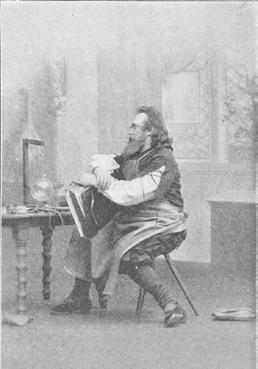
This extensive advance research was necessary to make it possible to create a historical background for the single one of his operas to take place in an actual time and place rather than a mythological setting. Whereas the figures of Tannhäuser, Wolfram von Eschenbach and Walther von der Vogelveide scarcely bore any resemblance at all to the minnesingers upon whom they were based, and it is also difficult to recognise, in the character of Elisabeth, Saint Elizabeth of the royal Hungarian House of Árpád, many of the masters of Nuremberg, (Hans Sachs, Kurt Nachtigall, Hans Vogel and Hans Foltz) were flesh-and-blood people
who did indeed live their lives in Nuremberg in approximately the manner depicted in the opera. Hans Sachs is the only one among them who has become a permanent fixture in the literary canon. He was a significant and extremely prolific poet and the composer of more than six hundred works, of which two-thirds were master-songs, and the others theatrical pieces, psalms, dialogues and fables.
Wagner, however, did not focus on his entire body of work, but only on the mastersong, as a form, and this was an excellent choice on his part. This unusual genre is highly appropriate, on the one hand, because it makes the contest measurable by way of its elaborate system of rules, and on the other hand, because it contrasts the requirement to comply with the strict rules with the need for freedom to allow inspired artistic creation. Already at the beginning of the opera, Wagner turns the poetic format into a subject of parody with the comic insertion of the “learned” apprentice David attempting to quickly school the love-stricken “outsider” Walther von Stolzing – with a performance abounding in errors – in the rudiments of the composer’s art. All of this is capped by the “Leges Tabulaturae” – that is, the dry cataloguing of the mandatory stipulations – being read by Kothner. Into this Procrustean bed of double dimensions, Walther needs to fit his giddy fantasy of winning admittance to the Masters’ guild, without which he is not even able to take part in the contest. His supreme judge, however, the one who would tally up his errors, is none other than his potential opponent! Would it be a surprise for him to fail his admittance examination?
Walther arrives with new songs for new times. His romantic, exuberant temperament does not intend to comply with the archaic regulations even it were able to do so. His rival, the malevolent and pedantic town clerk Beckmesser, would not be capable of comprehending the innovative artistic creation even if he had wanted to. First he attempts to impede the creation of his competitor’s song, then he appropriates it for himself but naturally proves unable to perform it. It’s a well-known fact that Wagner originally intended to use the name Hans Lick for the antagonistic clerk Beckmesser – creating a play on words from the name of his own enemy, the music critic Eduard Hanslick. Walther’s victory over Beckmesser was also the victory of the inspired creator over the formally trained critic.
Wagner nevertheless does not conclude the story with the unrestrained new artist vanquishing the representative of conventional practice. His true hero is no longer the young rebel, but rather Hans Sachs, the custodian of the German tradition who is at the same time capable of renewal. Without his help, Walther would never have won, and it is also he who in the end makes Walther understand that there is no progress without respect for tradition, and that his genius was worth nothing if it was not rooted in the audience and its life-giving language and culture. It is with the following words that Sachs admonishes Walther, who has emerged victorious from the contest, but with no wish to join the ranks of the master singers:
Honour your German Masters, then you will conjure up good spirits! And if you favour their endeavours, even if the Holy Roman Empire should dissolve in mist, for us there would yet remain holy German Art!
The emphasis on the signifier “German” is a fundamental aspect of Wagner’s text, although attempts were made to expurgate this from Hungarian translations used after the Second World War, as for many people the use of the words Deutsche, Reich and Volk in a single stanza of verse evoked the ghost of the Third Reich and the Führer who so admired Wagner. In his essay on Wagner written in 1952, Theodor Adorno traced back practically his entire body of work to an anti-Semitic outlook and the complexes arising from and predicated on it. He notes, among other observations, that “Wagner’s anti-Semitism constitutes itself from this contradiction between mockery of the victim and self-denigration. The gold-grabbing, invisible, anonymous, exploitative Alberich, the shoulder-shrugging, loquacious Mime, overflowing with self-praise and spite, the impotent intellectual critic HanslickBeckmesser – all of the rejects of Wagner’s works are caricatures of Jews. They stir up the oldest sources of the German hatred of the Jews and, at the same time, the romanticism of Die Meistersinger seems on occasion to anticipate the abusive verses that were not heard on the streets until sixty years later: »Noble Baptist! / Christ’s precursor! / Receive us graciously / There at the River Jordan.«”
The passionate anti-Wagnerism of Adorno, who was forced to flee Germany and the Nazis, is also widely shared in Hungary, which is why steps were taken to render the work acceptable for performance by “toning down” the libretto somewhat. But in the interests of avoiding the labyrinth of post-facto historical interpretations, it is worth considering the words of Thomas Mann, written in 1933: “The national idea, when Wagner introduced it as a familiar and workable theme into his works – that is to say, before it was realised – was in its historically legitimate heroic epoch. It had its good, living and genuine period; it was poetry and intellect – a future value. But when the basses thunder out at the stalls the verse about the »German Sword«, or that kernel and finale of Die Meistersinger: »Though Holy Roman Empire sink to dust, There still survives our sacred German art«, in order to arouse an ulterior patriotic emotion – that is demagogy. It is precisely these last two lines – which are also found in the earlier Marienbad outline – that attest to the intellectuality of Wagner’s nationalism and its remoteness from the political sphere; they betray a complete anarchistic indifference to the state, so long as the spiritually German, the »Deutsche Kunst« survives.”
At the time Die Meistersinger was conceived, the realisation of the unification of Germany and a nation-state was the overriding wish of the German people, something which Wagner himself understandably identified with. So much so that when unification was achieved in 1871, he wrote a triumphant Kaisermarsch in honour of Wilhelm I.
In any case, it was from Germany’s fractured condition that Wagner’s fortune and misfortune had arisen. In 1849, he had become involved in the Dresden revolution and was banished from German lands for more than a decade as a result. But his dreams would also never have been realised had an eccentric monarch, known as King Ludwig II and with an obsession for opera, not assumed the Bavarian throne in 1864. Wagner had by then already been granted amnesty from the Saxon king, but his existential situation had not improved and, still stateless and ridden by debts, he attempted to support himself by giving concerts. And it was then, as if in some kind of a fairy tale, that the Bavarian king, who had been on the throne for
scarcely two months, invited him to Munich, installed him in a house with a garden, paid off his debts and gave him every impression that he would assist him with everything in order that he might make a living from composing alone. Although this strange benefactor-minion relationship would not be without its troubles – primarily because the King found Wagner and Cosima’s love affair and eventual marriage to be scandalous – it did succeed in putting the composer on an upward trajectory. In 1865, Munich’s Royal Opera would première Tristan, to be followed by Die Meistersinger three years later.
Both premières were conducted by Hans von Bülow, who had no inkling that his wife had already given birth to two of Wagner’s children. In fact, his eyes were only truly opened during rehearsals for Die Meistersinger. The original première on 21 June 1868 was wildly successful even despite the family drama in the background. The King invited the composer into his own box as a sign of his special favour. They watched the performance together, at the end of which the composer accepted the applause as though he himself were some sort of uncrowned king. Their personal relationship came to an end shortly afterwards: Wagner – now with Cosima increasingly publicly by his side – was forced to leave Munich. Even though he continued to correspond with Ludwig II, they subsequently only met in person on a very few occasions, the first of which was eight months later at Bayreuth during rehearsals for Der Ring des Nibelungen.
Meanwhile, Die Meistersinger had gone on to conquer the world. Within a year, it had been premièred in Dresden, Dessau, Karlsruhe, Mannheim and Weimar, followed as well by Vienna and Berlin in 1870. It only made it to Hungary relatively late: in 1883, the year of Wagner’s death.
Here in Hungary, we were in no way left behind when it came to performing the first available musical sections. On the contrary. Wagner himself – after winning amnesty from the King of Saxony – first performed the Meistersinger overture on 1 November 1862 at the Leipzig Gewandhaus, and it was scarcely half a year later that audiences in Pest (at that time still a separate city from Buda) were able to
hear portions of the as-yet unfinished opera. 153 years ago, on 23 and 28 July 1863, Wagner gave his first two Hungarian concerts, of which we know, from the Színházi Látcső newspaper’s ringing endorsement, that, “the playlist included pieces from the operas Tannhäuser, Lohengrin, Tristan und Isolde, Die Meistersinger von Nürnberg, Die Walküre and Siegfried. Seat prices were raised by nearly 70 per cent.” Details of the evenings, which had grown into an absolute sensation, were revealed on the posters: “The hugely fortified orchestra will be conducted by Richard Wagner; the second part, the gathering of the master singers’ guild – by the orchestra; singing as the master Pogner will be Kőszeghi.” The Színházi Látcső provided the following interpretation of the as-yet unknown musical work:
“Prelude to the opera entitled »Die Meistersinger von Nürnberg«: The master singers, in a glorious procession, stand up before the people of Nuremberg. They bring in the »Leges Tabulaturae«, which is the only existing copy of their unique code and particular format for writing poems, the contents of which have long vanished. The grandly waving flag, on which is depicted King David playing a harp, is followed by »Hans Sachs«, an unrivalled popular figure. By way of greeting, the people sing his own songs to him. Then, from the crowd of people, a sigh of love wafts over to us. The fetching daughter of one of the masters, who has been slated as the prize for the winning song is dressed in festival finery. Anxious and filled with yearning, she seeks a glimpse with her own eyes of the object of her love, who is a poet but not a master singer. The youth makes a path for himself through the people. His gaze and voice emit a song of the eternally new love of youth. The masters’ apprentices childishly cut in and disrupt the love song. A scuffle ensues. At this, Hans Sachs, who has understood the love song, races in to shake the singer’s hand and give him a place between his own self and the love-stricken girl at the head of the procession. The people hail them loudly. The love song sounds out in the format of the song masters: a balance between pedantry and poetry has been found. The words, »All hail Hans Sachs«, sound out everywhere.”
What understanding the Hungarian audience might have gleaned about the work from this description is difficult to imagine, but in any case, this synopsis sounds much more humorous today, much like the comedy upon which Die Meistersinger may have been based. The critics, at any rate, preferred to occupy themselves with the selections performed from the Ring, Wagner’s long-awaited monumental work,
and so Die Meistersinger remained in the shadows, where it remained for another good three decades.
Nevertheless, János Richter, the future Hungarian conductor of the original première of the Ring better known abroad as Hans Richter, worked side-by-side with von Bülow to undertake the lion’s share of the rehearsal work for Die Meistersinger and did everything he could to popularise the opera in Hungary. From the autumn of 1871 onwards, he conducted numerous concerts of works by Wagner at the helm of the Budapest Philharmonic Orchestra, in which he played the overture as well as the quintet from the third act. In spite of this, the conductor – who would shortly become the most celebrated director in the world – suffered a number of attacks here at home, with messages to the effect that “by hook or by crook, he wishes to propagate Wagnerianism here in our youthful Hungarian capital, whose own national art he has by and large excluded from his concerts.”
There can be no doubt that Richter did indeed contribute significant energy to advancing the success of his adored Master of Bayreuth both here and internationally. Among other measures, he was the chief organiser of the Hungarian Wagner Society formed in 1872, which attempted to contribute to the construction of the Festspielhaus through subscriptions. At home, however, there were many who held the opinion that true Hungarian patriots should not fritter away their money on a festival theatre in Bayreuth, but should instead use their donations to support operatic life at home. As a consequence of this, Richter abandoned Pest, but his successor, the conductor Sándor Erkel – and son of composer Ferenc Erkel – was also unable to extricate himself from the growing intensity of Hungary’s Wagner cult. In late 1875, he himself conducted the quintet and prelude to the third act at the National Theatre, and it was also he who took on himself the work’s original Hungarian première eight years later.
The first performance took place on 8 September 1883, just a few months after Angelo Neumann’s travelling opera company brought Der Ring des Nibelungen to Budapest for a four-evening programme. Just as the Ring première, boasting the original Bayreuth sets and an international cast of principal singers, was a huge success at the German Theatre on Gyapjú Street, the same could be said of Die Meistersinger von Nürnberg in the old building of the National Theatre. While critics of the time mostly praised conductor Sándor Erkel and Lehel Ódry, who had sung the role of Hans Sachs, and assigned further kudos for the portrayals by Ferenc Gassi
(Walther von Stolzing), Fülöp Láng (Beckmesser) and Eliz Humann Szigeti (Eva), the audience failed to muster much affection for the piece. It soon became a Budapest witticism that Die Meistersinger was the opera whose third act had more people on stage than in the audience. As a consequence of audiences that were shrinking on a daily basis, only eight performances were given altogether, and the programme had to be withdrawn after a month.
As if things could get any worse, a second run followed at the new Royal Opera House four years later. Due to a lack of new scenery, it was performed with the old set pieces and the atrociously lax production attracted little attention, with its principal singers seeming to have simply aged since the original première without any renewal to speak of having taken place. Records show that while Ódry had also been a convincing Sachs second time around, Mrs. Maleczky in the role of Éva and Zsigmond Hájos as Walther were said to be “lacking in youth”. The rerun lasted all of two nights: Despite cheap ticket prices, audiences showed barely any enthusiasm for the production at all. While it was maintained that Sándor Erkel was an excellent director, Wagner was not his forte. He was unable to make a success of either Die Meistersinger or Der fliegende Holländer, and it was probably a stroke of good fortune that he never attempted the Ring. For this latter work, a larger personality was necessary, which came in the form of the young Gustav Mahler. Later, in 1895, it would fall upon Artúr Nikisch, the most brilliant conductor of his era, to perform Die Meistersinger von Nürnberg in the manner it deserved.
Ever since then, the opera has been one of the most beloved Wagnerian works on Hungarian stages, just as elsewhere. To date, it has been shown at the Opera House in eleven new productions and reruns under the direction of such esteemed conductors as István Kerner, Sergio Failoni, Otto Klemperer and Miklós Lukács.
Reporting from the original Budapest première
Appearing in the 10 September 1883 edition of Nemzet, the journal edited by Mór Jókai, was the following:
The frenzied ruckus (fight scene) that makes the end of the second act so remarkable constitutes one of the most difficult-to-learn pieces to have ever been staged. I have heard it said by Wagnerites and veterans of thirteen rehearsals that Wagner himself despaired that the theatrical ensemble would ever learn this monstrous musical hurly-burly and gave Richter six weeks to teach them this one passage (the fugue), warning him that if the rehearsals did not prove successful, he would write in a different choir for this section of the work. [János/Hans] Richter completed his assignment with flying colours and the Master, upon hearing it in the rehearsal hall for the first time, tore from his sleeve the swan-insignia cufflinks that King Ludwig had presented to him after the first performance of Lohengrin, and placed them in Richter’s hand with the words, “I can do no greater honour to the gift from my King than to decorate you with it”. [Sándor] Erkel conducted so wonderfully that Wagner, if he were still alive today, would probably not have begrudged our Sándor a “Hosenträger” [the German word for a trouser braces] of historical proportions.
Quoted by Emil Haraszti, in: Wagner Richard és Magyarország. [Richard Wagner and Hungary]. Edition by Hungarian Academy of Sciences, Budapest, 1916. p. 411
Written by: Zoltán Rockenbauer
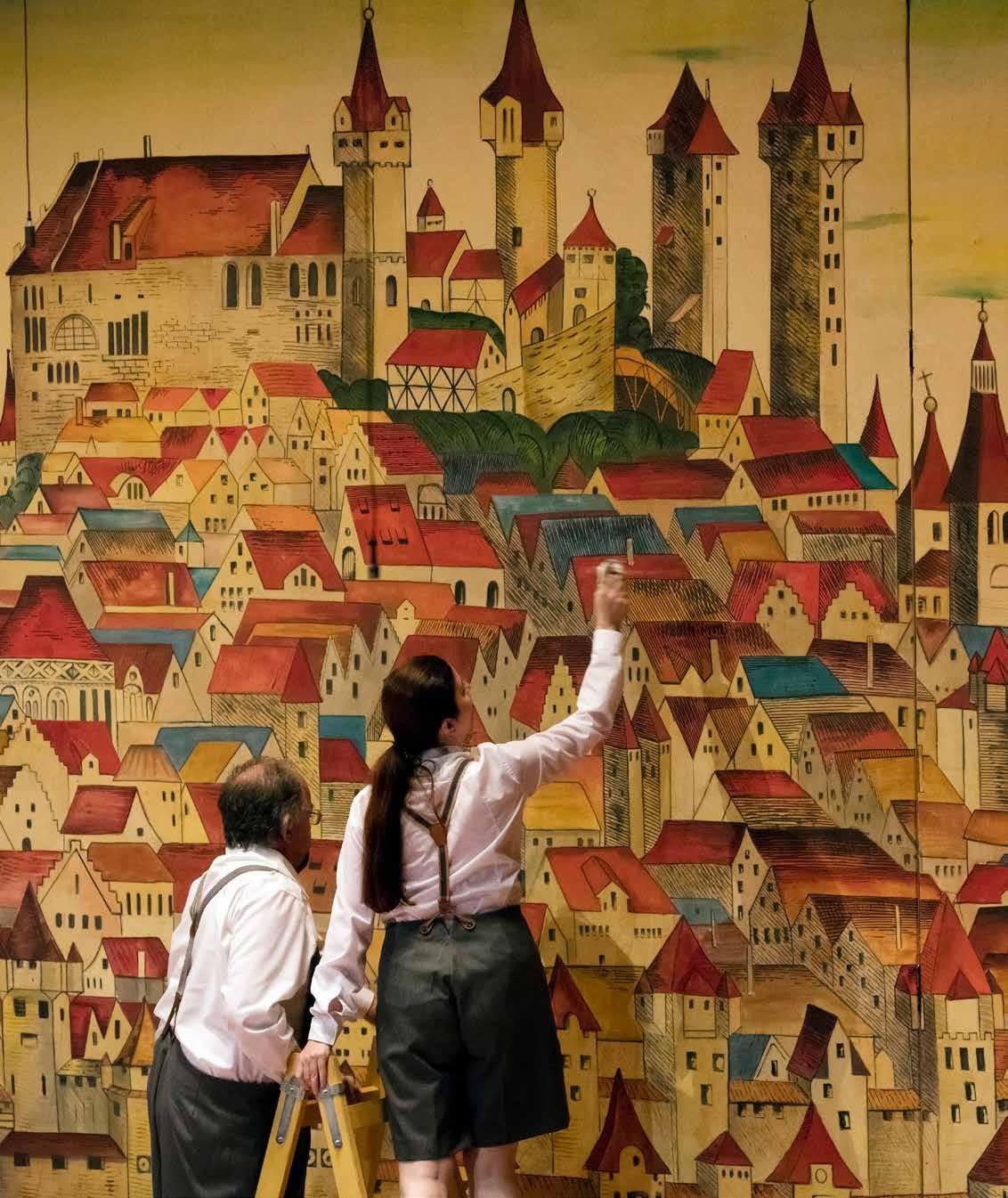
Why is fighting so good at Müpa Budapest? Why is it important to whisper? What do driving a car and conducting have in common, how are chamber music and Die Meistersinger related, and why would it also be possible to perform this work without music? Speaking of performance: For a while now, Ádám Fischer has welcomed every opportunity to conduct Die Meistersinger as if it were a gift, and we will now discover how his interpretation has matured, developed and transformed after a prolonged hiatus.
– When I asked Christian Franz last year which Wagner character he would most like to talk to, he responded with a smile: he would ask Niklaus Vogel’s apprentice what illness laid his master low and kept him from attending the meeting of the master singers. Who would you ask, and what?
– I would perhaps ask the Night Watchman if he is still aware of what he is singing after repeating the same thing 20 times over, or whether he is thinking about having to go shopping with his wife the following day. This is a memorable part of the Müpa Budapest production as we were able to find a singer, Dömötör Pintér, who could also play the trombone (for Wagner, the trombone represented the horn of the night watchman). He is supposed to sing the same note that he subsequently plays, but he intones too deeply (as Wagner intended) and his instrument plays a higher note –which he does not even notice, of course. So I would ask him if he is aware of what he is singing and why, and how he is singing it, or is his mind entirely elsewhere and his mouth is just moving mechanically.
– Are there ever times when a conductor just goes through the motions? – There are, so he has to know to switch back on in time. If a short phrase needs to be repeated, for example, but it continues differently the second time around, the singer sometimes becomes confused and doesn’t know where they are – that’s when you need to help him or her back by indicating “careful now, don’t sing now, join in now.” Car drivers know this feeling very well: They drive mechanically for hours then an animal suddenly jumps out in front of them and they have to react in a split second.
– Where does the tradition of the chief music director conducting Die Meistersinger at opera houses originate?
– Perhaps because people think it is a bigger job to conduct a Wagner work than a Rossini opera, but this is not true. I think this attitude is wrong because it pigeon holes both the works and the artists as it is possible for one person to have a better feel for a work than someone in a higher position.
– What makes this work so special?
– There are very few examples in all of opera of a libretto being of such high literary quality. Which would even make it possible to put on Die Meistersinger without music.
– In fact, it has been done.
– Right. Only one other work springs to mind, Der Rosenkavalier. I may be speaking out against myself and the genre of opera a little here, as I always say that the libretto of an opera should never be too good as people immediately say it is a shame they are singing and they would like to understand more... But whether a singer can be understood is only partly down to singing technique, a lot depends on what tone the part is written in. In this respect, too, Wagner took great care to painstakingly ensuring that everything could be understood. In Die Meistersinger it is perhaps true to say that the music and words are connected on an even higher plane than in other Wagner operas. Of course, I am not trying to say this is my favourite Wagner opera because there is no such thing! (laughs)
– Well, you nearly let it slip!
– Yes, but the one I like best really is always the one I am working with at the time. Just as I have an affinity for the intimate moments of Tristan, I approach Die Meistersinger from the direction of chamber music. Wagner uses few instruments here, but, if you can get in the mood, you will share in enjoyment of the highest order.
– In preparation for the interview, I listened to the overture four times in a row before telling myself, thank you, I’m going to take a rest now.
– Well yes, this is a special and complex style: Wagner wants to hark back in a stylised fashion to the music of the middle ages, but what we hear is of course not medieval music, but what people imagined it to be in Wagner’s time. And let me tell you one other thing: If the overture to Die Meistersinger is not to someone’s taste, that is not the fault of the composer, but of the orchestra and conductor. We have to play it so they don’t want to stop. I consider it important to pay attention to the given orchestra’s sound and style. I conduct it differently with the Radio Orchestra than with a Danish ensemble. My task is to set a course: so they feel where the music is
exciting, where the surprises are, and where the moments of calm occur. This music is much less romantic than that of the other Wagner operas, the conductor has fewer opportunities to play with the rubatos, and yet many subtle rubatos are needed to give life to the work. And the 21st century audience of course has different expectations to those of the 19th century. The viewer always has a pre-conceived expectation of what is going to happen. In the past one hundred years, what generally happened was that the orchestra would come in at seven, the interval would start at a quarter-past-eight, the continuation would begin at quarter-to-nine, and the performance would end not long after nine-thirty.
– To what extent does the break affect the experience or even our interpretation?
– The long intermissions serve their purpose with Wagner. But they are of course only kept in Bayreuth and here at Müpa Budapest. Due to their collective contracts, this is not really possible in opera houses. For the orchestra and choir, working hours are defined by the first and last minute, which would make this double if not triple time. It is great that long intervals can be held at Müpa as this is how Wagner intended it.
– In an age of artificial intelligence and social media when we are living through a crisis of critical thought, Die Meistersinger is particularly compelling and current. What do we think of art, performance, originality? What is a work of art and what is theft?
– I will also give a presentation on the relationship between critique and art during the Wagner Days as Wagner was provoked to compose Die Meistersinger in part by a critical review written by Eduard Hanslick.
– Which is why Beckmesser was originally called Hans Lick.
– Right. What Hans Sachs says – that no one can be held accountable for what they don’t even intend – is one of the fundamental truths of criticism. Every critic can write this on their doorpost, even though artists will always be offended if something negative is written about them. If, however, the critic has not understood what they wanted to say, he is not necessarily at fault – it might be that the artist did not convey the message sufficiently well. They will never accept this, of course, while I always quote an old Georg Kreisler hit: every artist appreciated it when I wrote something bad about someone else.
– It is not necessarily to be expected for the artist’s relationship to criticism to be objective.
– It will never be objective. I also want to talk about the hatred directed towards certain critics in the 19th century. Hanslick was apparently proud to have been part of the inception of Die Meistersinger, but I need to look into this further.
– Perhaps this is the only appropriate strategy, what would have changed had he taken offence?
– I have a feeling that if Beckmesser had remained Hans Lick, he would not have been that happy after all... (laughs)
– It is also a recurring argument that not many critics have found their way into art history…
– See, ”Hans Lick” made it. In any case, writing reviews is a special craft. In my childhood, I knew György Kroó [a prominent Hungarian music critic and musicologist] very well. He had a good relationship with my father, but, from the moment I began to appear in public, he no longer wanted to meet us because he said he wanted to remain objective.
– During our conversations prior to last year’s Wagner Days, Iréne Theorin and Christian Franz said they are increasingly refined in approaching particular parts. They both said it was progress that they now dare to sing differently, even very quietly. Where do you currently stand with Die Meistersinger? How much quieter and more sensitive is it than six, eight or ten years ago?
– I always knew that the intimate moments had to be developed. Wagner is unjustly accused of being bombastic. Hans Sachs has become more pensive, for example. I dare to have more pauses for him to think over what he is saying, because he is also looking for the right words, just like me. Old men forget their words.
– And how do the rhythms change?
– Simply put: it is easier to slow down than to speed up. It is often the case that young conductors create a ritenuto and can’t return to the original tempo, slowing down the performance. This is a huge mistake. I now dare to consciously conduct some intermediate measures at a faster tempo. I didn’t dare to do this previously as it is not written down, but I now know that is of no consequence. If what those two measures have to say is less pronounced than those that went previously, I conduct them with more vigour.
– It is not rare for one motif or another to remain with the audience for some time.
Something different that perhaps has a significance the listener needs to ponder over. Maybe something that applies specifically to the orchestra or conductor. Do you ever find that, after a series of rehearsals and once the last performance is over, something stays with you for a long time?
– Very often as I live the pieces with the cast. As I grow older, I always see something different in a role, the emphasis falls elsewhere. I now tend to see the energy of Walther through the lens of Hans Sachs, not like I did 30 years ago. Of course, a conductor has to behave like a surgeon during the performance and, although I am not paid to enjoy the music, I am still able to enjoy it. When I decide what direction I want to take the performance in, or I realise during rehearsals how beautifully the clarinet player is able to play a particular phrase if I speed up the end a little... I am always happy to make these discoveries. I am often surprised at the new things I come across in a piece.
– What was the last thing you discovered in Die Meistersinger?
– That’s hard to say because I last conducted it before Covid. And that had the same effect on me as when you get over a very serious illness, you recover and every aspect of life suddenly becomes a gift. So that was probably it. I do not take it for granted that we can perform Die Meistersinger here and now, that I feel good, that there is nothing wrong with me. I will only be able to tell you how different it was after the performance.
– With Parsifal, it was obvious why Müpa is a special venue and there are several parts of the Ring that can be staged here like nowhere else. What is the situation with Die Meistersinger?
– The fighting scene is always a challenge for any director and conductor. Due the acoustics at Müpa, everyone hears each other much more clearly, which means not only those fighting, but also the orchestra and the fighters and vice versa. In our staging, there are also those who are fighting and those who are singing (of course, the audience can’t see this), so we are able to construct the scene even more freely and I don’t constantly have to think about maintaining the tempo to stop us falling apart as everyone can hear each other. If we have a space that makes this kind of thing possible, we are duty-bound to make the most of it.
– For those just getting to know the work, what makes Die Meistersinger attractive in 2025? – These operas will always remain exemplary because they deal with fundamental human emotions, and while everything in the world may change, people’s feelings do not. If someone falls for a young girl, they are overcome by the same feverish
trembling, and if they are jealous, they are just as jealous. Young people in the 18th and 19th centuries felt the same hopeful excitement: “Oh, will she notice me...?” The piece is so well written that everyone will recognise themselves, particularly teenagers. We also still remember those emotions, but they are just discovering them. And so, I have to admit, I sometimes even understand Beckmesser now.
– If there is one thing you would change in the plot of Die Meistersinger, what would it be? – I sometimes got the feeling that, if I were Hans Sachs, I would start protesting and kicking up a fuss later, and I would let the young couple get away... But this is the difference between the two of us: he knows how it will end because he knows everything. He’s a wise man.
– “Comical and light, can be performed anywhere without problem.” – This is what Wagner initially wrote about Die Meistersinger. What happened to this lightness and potential to be performed anywhere without problem?
– It needs to be performed in such a way that the audience gets the feeling it was problem-free and easy! (laughs) Nobody should notice the huge amount of work that went into it. A sweat-soaked production of Die Meistersinger would be the death of the work. But Bartók also said of his Music for Strings, Percussion and Celesta that it was very simple and could be performed after two rehearsals. Yet he had written one of the hardest pieces of the 20th century.
– What is the most difficult thing about performing Die Meistersinger? – Its translucence.
– What you are saying is also interesting because the stereotypical way of looking at Wagner suggests constant riding in on horseback, and helicopters. In truth though, the thing that disturbs us most is when something happens quietly.
– I could also denounce the critics at this point because I worked a lot with the singers to get them to whisper, I hold back the orchestra, the première comes and goes, but then during the second performance they start to sing loudly anyway. This can only mean their voice coach complained or a critic wrote the singer couldn’t be heard because he or she didn’t have the voice for it. My task when this happens is to get them to stop paying attention to these criticisms. Whispering is very important and there are few singers who are prepared to do it. I was very happy that Iréne Theorin and Christian Franz did it, but you need the right partner. The truth is that they can never be too quiet – it is more likely that the orchestra is too loud.
Interview conducted by Adrienn Csepelyi

Born in Budapest in 1949, Ádám Fischer initially studied at the Conservatory in Budapest before earning his conducting degree at the Vienna Academy of Music under Hans Swarowsky in 1971. He later attended masterclasses held by Franco Ferrara in Venice and Siena. Key milestones in his career include European opera houses such as Graz, Sankt Pölten, Vienna, Helsinki, Munich, Freiburg, Kassel and Mannheim. He has also served as chief music director of both the Hungarian State Opera and the Hungarian Radio Symphony Orchestra. A frequent guest at major opera houses and concert halls in Europe and America, he has regularly conducted at Bayreuth. He has closely collaborated with Müpa Budapest since it opened its doors, conducting Haydn’s oratorios The Creation and The Seasons at New Year’s concerts. He founded the Budapest Wagner Days in 2006 and has overseen the festival ever since. The productions put on as part of the series have garnered significant international recognition over the years.

German bass Tobias Schabel has been an ensemble member of the Bonn Opera since 2019, where he has sung Baron Ochs in Der Rosenkavalier, Figaro in Le nozze di Figaro, Philip II in Don Carlo and Méphistophélès in La Damnation de Faust. Recent highlights include Hans Sachs at Bonn Opera and Baron Ochs at Leipzig Opera. Schabel has appeared at leading venues including the Hanover State Opera, Staatsoper Berlin, the Salzburg Festival and Milan’s La Scala, performing roles such as Sarastro in Die Zauberflöte and Daland in Der fliegende Holländer. His rich concert repertoire includes Elias, Paulus, the Requiems of Mozart and Verdi, the Passions of J. S. Bach and Beethoven’s Ninth Symphony. A graduate of Hamburg University, he is a recipient of the Hamburg Mozart Prize.

Gábor Bretz was born in Budapest. He began his studies in Los Angeles, then continued them in Budapest, winning the grand prize at the Maria Callas Competition in Athens in 2005. He performs regularly at the Hungarian State Opera, where he sings the most important bass and bassbaritone roles. He has debuted at many opera houses abroad as well, including Milan’s La Scala, New York’s Metropolitan Opera and London’s Covent Garden, along with theatres in Munich, Berlin, Vienna, Salzburg, Brussels, Amsterdam, Palermo, Naples, Bologna, Hamburg, Aix-en-Provence, Tokyo and Sydney. He frequently sings the title role in Bluebeard’s Castle in concert and staged performances, and has taught at the Liszt Academy since 2018.

Renowned Danish baritone Bo Skovhus studied at the Aarhus Music Institute, the Royal Opera Academy in Copenhagen, and in New York. He has portrayed a wide range of compelling roles, including Reimann’s Lear, Beckmesser, Wozzeck, Titus in Michael Jarrell’s Bérénice, Dr. Schön in Lulu, Mandryka and Onegin at prestigious venues such as the Paris Opera, Vienna State Opera, Bavarian State Opera, Bayreuth Festival, Verbier Festival, Maggio Musicale Fiorentino and Carnegie Hall. Recent appearances include Der Rosenkavalier in Geneva, The Makropulos Case in Amsterdam and Capriccio at the Salzburg and Edinburgh Festivals, as well as György Kurtág’s Fin de partie at the Berlin State Opera. In recognition of his artistic achievements, Skovhus has been honoured with the titles of Austrian and Bavarian Kammersänger.

Following his success at the Belvedere Singing Competition in Vienna, Miklós Sebestyén has performed at major venues such as the Metropolitan Opera in New York, La Scala in Milan, Covent Garden in London, the Bolshoi Theatre in Moscow, the Welsh National Opera, Teatro Real in Madrid, Theater an der Wien, the Montreal Opera, Komische Oper Berlin, the Oslo Opera, Teatro Nacional de São Carlos in Lisbon and the Bregenz Festspiele. He debuted at the Hungarian State Opera in 2011. Throughout his career, he has worked with conductors and directors like Riccardo Chailly, Carlo Rizzi, Fabio Luisi, Lorin Maazel, Ádám Fischer, Robert Carsen, Kasper Holten, David Pountney, Philippe Arlaud, Giancarlo del Monaco and Peter Konwitschny. His most notable roles are Bluebeard, Figaro, Leporello, Sarastro, Don Alfonso, Pizarro and Prince Gremin.

International engagements bring Magnus Vigilius to houses like the Deutsche Oper Berlin, Semperoper Dresden, Zürich Opera, Grand Théâtre de Genève, Royal Opera Houses of Stockholm and Copenhagen, as well as to Leipzig, Naples, Strasbourg, Prague, Amsterdam, Brussels or the Bayreuth Festival. The Danish tenor can be heard in roles like Lohengrin, Walther in Die Meistersinger, Siegmund and Siegfried, Erik in Der fliegende Holländer, Steva in Jenůfa, Boris and Tichon in Kát’a Kabanova, Albert Gregor in Věc Makropulos, Cavaradossi in Tosca or Bacchus in Ariadne auf Naxos. He performs concerts in Japan, Germany, Switzerland, Denmark, among others. He won two prizes at The Lauritz Melchior International Singing Competition and his portrayal of Siegmund was recognised with the Danish Reumert Prize.

Polina Pasztircsák launched her career with her victory at the 2009 Geneva International Music Competition and has since become a sought-after performer in opera, concert and art song across Europe. She has appeared at gala events alongside Plácido Domingo, José Carreras, Erwin Schrott and José Cura and worked with Riccardo Chailly, René Jacobs, Michael Sanderling, Alexander Sladkovsky and Sabine Meyer. Her regular chamber music partner is pianist Jan Philip Schulze. She has performed at the Menuhin Festival in Gstaad, at Barcelona’s Liceu, in the Grand Théâtre de Genève’s Ring cycle, and is a returning guest at Milan’s La Scala, Dresden’s Semperoper, the Budapest Wagner Days, and the Hungarian State Opera, which honoured her with the title of Chamber Singer in both 2016 and 2024. Her discography includes recordings for Sony and Harmonia Mundi.

Cornel Frey started his career in the Lucerne Children’s Choir and later trained in Bern under Jakob Stämpfli.
After a year in the Zurich Opera Studio, he signed with Wuppertal in 2003, where he took on numerous character roles. In 2005, he made his debut at the Vienna Festival under the baton of Nikolaus Harnoncourt. Currently a member of Deutsche Oper am Rhein (where his key roles include Mime, Pedrillo, the Witch in Hänsel und Gretel and Brighella in Ariadne auf Naxos), he has also sung at the Bavarian and Hamburg state operas, the Lucerne Festival and the Styriarte festival, working with Wolfgang Gönnenwein, Alois Koch, Dan Ettinger and Antonio Pappano.

Born in Kikinda, Vojvodina, the tenor Tivadar Kiss graduated from the Liszt Academy under Balázs Kovalik and András Almásy-Tóth in 2010, by which time he had already taken his bow at the now legendary Marriage of Figaro performance that was part of the Mozart Marathon at the Budapest Spring Festival. He also debuted in 2009 at the Hungarian State Opera as Monsieur Triquet from Eugene Onegin. In 2011, he won the Juventus Award of the Hungarian State Opera and remains a frequent collaborator in opera productions in Szeged, Miskolc and Pécs alongside his work in Budapest. For several years, he was a company member and later guest artist at the Hanover Opera, and he has also performed on several occasions in Pilsen, Avignon and Mannheim.

Barna Bartos began his musical studies in his hometown of Sepsiszentgyörgy before earning his degree at the Liszt Academy in Budapest, where his singing teacher was Katalin Halmai. He has also participated in masterclasses held by Claudio Di Segni, Éva Marton and Andrea Rost. In recent years, he has been refining his skills under the tutelage of Ildikó Komlósi. He has worked with a number of outstanding artists, conductors and directors, including Miklós Szinetár, Calixto Bieito, András Almási-Tóth, Michael Boder and János Kovács. He made his debut at the Hungarian State Opera House in 2020, where he has sung the roles of the Duke of Mantua in Rigoletto and Rinuccio in Gianni Schicchi, alongside several minor parts. He received the Annie Fischer Scholarship in 2021.

Péter Bodolai began playing the piano in Dunaföldvár, before studying the organ and cantoring. The young tenor has been taking private singing lessons with Miklós Orth since 2014 and has attended several masterclasses with Gianluca Terranova. In the meantime, he also earned a degree in vehicle engineering at the Budapest University of Technology and Economics in 2016. He has received special prizes at both the Fiorenza Cedolins Singing Competition in Italy and the 2024 József Simándy International Singing Competition. As a concert singer, he has appeared outside Hungary in Italy, Transylvania, Slovakia, England and Germany.

Dávid Dani graduated from the Liszt Academy with degrees in vocal performance and vocal pedagogy in 2015, while also attending masterclasses by world-famous artists such as Claudio de Segni, István Dénes, Dénes Gulyás, Yevgeny Nesterenko, Kurt Rydl, Ildikó Komlósi and Éva Marton. He has performed as a soloist in Dvořák and Rossini’s Stabat Maters, Verdi and Mozart’s Requiems, and masses by Beethoven, Haydn, Liszt, Puccini and Schubert. The young bass has appeared in roles such as Sarastro, Seneca, Sparafucile, Don Basilio, Osmin, Ramfis and Arkel at venues including the Szeged Open-Air Festival, the Margitsziget Open-Air Stage, the Miskolc Opera Festival, the Romanian National Opera, Vienna’s Musikverein and MuTh, Opera Fuerteventura and the Hungarian State Opera House.

Marcell Bakonyi, a bass-baritone born in Győr, studied under Júlia Hamari at the Stuttgart Music Academy. Since graduating, he has performed with great success at the Pesaro Rossini Festival, as well as in Salzburg, Nuremberg, Oslo and Zurich. He is a recipient of the Gusztáv Oláh Memorial Plaque. He debuted at the Hungarian State Opera in 2011 as King Andrew II in Bánk bán and has since appeared before the Budapest audience as Porgy, Escamillo, Mustafa Bey (Rossini’s L’italiana in Algeri), and Leánder (Zsófia Tallér’s Leánder és Lenszirom).

Erika Gál is a member of the Hungarian State Opera who has been recognised with the Gusztáv Oláh commemorative plaque and the Komlóssy and Zoltán Závodszky awards. In 2001, she won the Wagner Society’s Bayreuth scholarship. She was a recurring guest at the Miskolc International Opera Festival and debuted as Carmen at the Bucharest Opera Festival and as Amneris at the Szeged Open-Air Festival. Counting Plácido Domingo, José Cura, Renato Bruson and Anja Silja among her past partners, she also sang the title role in the Hungarian State Opera’s production of Karl Goldmark’s The Queen of Sheba in New York in 2018 and in Tel Aviv in 2019. She regularly performs at the Budapest Wagner Days festival in the roles of Flosshilde, Griemgerde, Erda and the First Norn.

After studying piano, trombone and guitar, Dömötör Pintér became a professional singer in 2006. He first joined the Hungarian Radio Choir and the Honvéd Male Choir, and since February 2011, he has been a member of the Hungarian National Choir. Pintér is also a regular performer with the Purcell Choir and the Tomkins Vocal Ensemble, and for many years he served as the bass singer in the a cappella jazz group Octovoice. He made his solo debut in 2010, performing the roles of Vencellin and the Crier in
Ferenc Erkel’s opera King Stephen. Since then, he has appeared on numerous concert and opera stages, including Müpa Budapest, the Liszt Academy and the Erkel Theatre, singing works by Mozart, Verdi, Puccini, Erkel, Richard Strauss and Levente Gyöngyösi. He is also a recurring guest at the Budapest Wagner Days.

Budapest-born Attila Dobák began studying singing at the Béla Bartók Music Institute after being inspired by concert recordings of The Three Tenors. He later furthered his education in Italy and the United States. After numerous performances in the U.S., he gained attention in Hungary as the title role in Kodály’s Háry János at the 2017 Budapest Spring Festival. It was not long before he made his debut at the Hungarian State Opera, where he appeared in La bohème, Carmen, Die Frau ohne Schatten and L’italiana in Algeri.

Gergely Újvári was born in 1985 in Transcarpathia and initially received private singing lessons. He joined the Csokonai Theatre in Debrecen as a singer aged 21 and has been with the Hungarian State Opera since 2012, first as a member of the choir and then as a soloist. He received his first leading role in János vitéz in 2014 and his repertoire primarily comprises lyric tenor roles. He has appeared with the Hungarian State Opera in Prague, Warsaw, Bratislava and Cluj-Napoca, as well as most Hungarian cities, and also regularly participates in operetta galas and lieder recitals.

Ferenc Endrész earned his degree in 2021 as a student of Péter Fried. While studying at the Liszt Academy, he attended masterclasses with Francisco Araiza and Iris Vermillion, sang the solo part in Beethoven’s Symphony No. 9, performed in the Requiems by Mozart and Fauré, and appeared as Papageno in The Magic Flute, as well as in the Hungarian première of Julian Philips’s opera The Yellow Sofa. He has also sung at the National Theatre of Pécs and in several Hungarian State Opera productions (Dead Man Walking, Salome, Rinaldo), as well as taking on the title role in Mozart’s The Impressario.

Dirk Becker earned his degree at Salzburg’s Mozarteum and since then has designed sets and costumes for operas and theatre, ballet and musical productions as a freelancer. One of the directors he has worked closely with is Michael Schulz, with whom he developed, in addition to Die Meistersinger von Nürnberg, the German National Theatre of Weimar’s production of the Ring, Salome at Semperoper in Dresden and Elektra at the Landestheater in Linz. His major works are Armida (Salzburg Festival), The Prince of Homburg (Theater an der Wien), Orlando furioso (Frankfurt), Alceste (Aix-enProvence, Copenhagen, Wiener Staatsoper), Tristan und Isolde (Nuremberg), Parsifal (Stockholm) and L’elisir d’amore (Dresden’s Semperoper).

Renée Listerdal was born in Sweden and studied costume design in Florence. She has worked as a freelancer since 1992, including at theatres in Hamburg, Vienna, Stuttgart, Mannheim, Essen, Kassel and Dortmund and at the Bonn Opera, Deutsche Oper Berlin, the Bayerische Staatsoper, and in Dresden’s Semperoper. She has designed costumes for productions of such works as Der Freischütz, Manon Lescaut, Carmen, Rigoletto, Aida, Don Giovanni, Idomeneo and L’elisir d’amore. She has a long association with Michael Schulz, having designed the costumes also for his production of the Ring.

Sylvie Gábor earned her master’s degree at the Julius Maximilian University of Würzburg, and studied stagecraft on a scholarship in Padua. She began her career as an assistant director, then joined the Komische Oper Berlin and Stuttgart State Opera as a revival director. From 2011 to 2013, she worked in Austria, Oman, China and Germany as a freelancer. She has been the revival director for the Hungarian State Opera since 2013 and has also directed independently (Puccini: Tosca, Bach: Saint John Passion, Beethoven: Fidelio, von Suppé: Die schöne Galathée, Szilágyi: Leánder és Lenszirom) since 2015. At Müpa Budapest she has staged several introductory opera performances, and in 2023, she directed the Budafok Dohnanyi Orchestra’s production of Much Ado About Nothing.

Michael Schulz studied theatre and opera directing in Hamburg. He began his career in Kassel and Essen before becoming Opera Director at the German National Theatre in Weimar. Since 2008, he has served as Intendant of the Musiktheater im Revier in Gelsenkirchen, and he is the designated General Director of the Saarländisches Staatstheater Saarbrücken, beginning with the 2025/2026 season. As a guest director, Schulz has worked with numerous prestigious institutions, including Deutsche Oper am Rhein, Landestheater Linz, Leipzig Opera, Semperoper Dresden, the Beijing Music Festival, and the Salzburg Easter Festival, where he directed Parsifal in the Wagner’s bicentenary year. In recent years, Schulz has staged acclaimed productions of works by Verdi, Puccini, Boito, Johann Strauss, Shostakovich, Janáček, Kurt Weill and Richard Strauss.

János Kovács earned his degree in conducting from the Liszt Academy in 1973. In the decades since, he has worked at the Hungarian State Opera as a répétiteur, conductor, chief conductor, first conductor and principal music director. Between 1979 and 1981, he served as a musical assistant at the Bayreuth Festival. He has taken the podium before leading Hungarian symphony orchestras all over the world and created numerous recordings with world-renowned soloists. He has received the Kossuth and Liszt Prize and the Bartók-Pásztory Award, and is an Eternal Member of the Hungarian State Opera.

Zoltán Pad graduated from Budapest’s Liszt Academy and then continued his studies in Munich. After leading the Debrecen Kodály Choir between 2009 and 2014, he took the helm of the Hungarian Radio Choir. As a choirmaster, he has worked with Simon Rattle and the Berlin Philharmonic, Daniel Harding, Péter Eötvös and the Vienna Philharmonic, among others. He is an internationally acclaimed conductor who has conducted such excellent ensembles as Stuttgart’s SWR Vokalensemble, Leipzig’s MDR Rundfunkchor, Hamburg’s NDR Vokalensemble, Choeur de Radio France and Chamber Choir Ireland.

Csaba Somos earned his degrees in choral and orchestral conducting at the Liszt Academy, complementing his studies by attending masterclasses held by Johannes Moesus, Jürgen Jürgens and Yuri Simonov. For 17 years, he was the choirmaster of the Vasas Choir and he led the Lajos Vass Chamber Choir, which he founded, from 2002 to 2017. He served as music director of the Csokonai Theatre and the Pécs National Theatre, as well as chief conductor of the Hungarian Radio Choir. He has also appeared as a guest conductor and choirmaster in Italy, Spain, Romania, Austria, Germany, Japan and China. A Liszt Prize-winning Artist of Merit, he teaches at the Liszt Academy, serves as a jury member for music competitions and festivals, and is co-president of the KÓTA, the association of Hungarian choirs, orchestras and folk bands. He has led the Hungarian National Choir since 2016.
The Hungarian Radio Symphony Orchestra was formed in 1943 following an initiative by Ernő Dohnányi and established its international rank and reputation through its numerous concerts both in Hungary and abroad, as well as through CDs and radio recordings. The orchestra has further enhanced the fine reputation of Hungarian music culture in more than 50 countries across four continents. Its balanced sound, flexibility and preservation activities that promote the popularity and recording of contemporary Hungarian music have received international acclaim from critics, guest conductors, soloists and composers. The orchestra has participated in the Budapest Wagner Days since the start, receiving much acclaim. The music director of the Hungarian Radio Art Groups is Domonkos Héja, a winner of the Liszt Award, the Gundel Art Award and the Junior Prima Award.
The Hungarian Radio Choir, founded in 1950, celebrates its 75th anniversary this year. Its repertoire embraces all areas of choral singing, including opera and oratorio. Works by contemporary Hungarian composers are frequently featured in their performances. A frequent guest at prestigious international music festivals, the chorus has appeared at such events in Salzburg and Vienna. The list of famous conductors that the chorus has worked with includes Lamberto Gardelli, Lovro von Matačić, Kurt Masur, Yehudi Menuhin, Giuseppe Patanè, Helmuth Rilling and Yuri Simonov.

The Hungarian National Choir was founded in 1985, as the Hungarian State Choir, and worked under the direction of choirmaster Mátyás Antal for more than a quartercentury. During this period, the ensemble became one of Hungary’s leading professional choruses, an oratorio choir that not only served to support its sister orchestra, but which was also capable of staging outstanding productions of a cappella works, no matter whether they were performing Baroque music or contemporary compositions, and even jazz is not unfamiliar territory for them. They have made successful appearances in quite a few major European cities, as well as in Japan, Israel and Turkey. Serving as the ensemble’s choirmaster since January 2016 is Csaba Somos.
A WAGNERÉLMÉNYT!

HE WAGNER EXPERIENCE HOME WITH YOU!
Ajándéktárgyainkat az emeleti Előcsarnokban és a Vince Könyvesboltban vásárolhatja meg.
Our souvenirs are available to purchase in the first-floor foyer and at the Vince Book Shop.
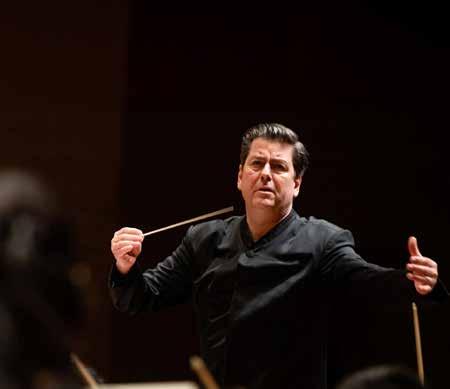
2025. október 3.
Közreműködik: Ránki Dezső – zongora, Ștefan Pop – tenor
2025. október 10.
LISZT ÜNNEP
MURNAU: FAUST –
Fassang László koncertje

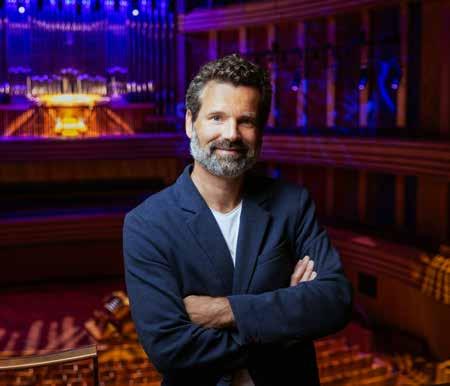
Fassang László Fotó © Nagy Attila, Müpa
2025. október 22. LISZT ÜNNEP
Közreműködik: László Boldizsár, Balga Gabriella, Marián Lukáč –ének, a Kassai Nemzeti Színház Zenekara és Énekkara
Vezényel: Peter Valentovič
Pasztircsák Polina

2025. november 1.
Közreműködik: Pasztircsák Polina, Corinna Scheurle, Martin Mitterrutzner, Konstantin Fedotov – ének, Orfeo Zenekar
Vezényel: Howard Williams
2025. november 10.
Közreműködik: a Budapesti Filharmóniai Társaság Zenekara
Vezényel: Gianluca Marcianò
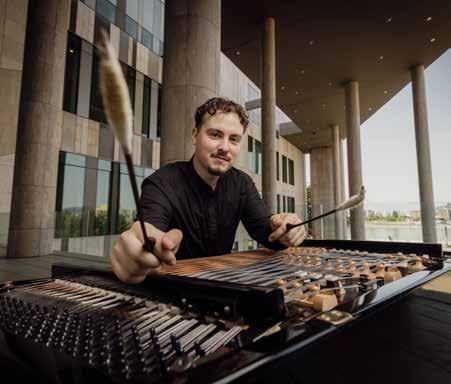
Horváth Áron
Fotó © Csibi Szilvia, Müpa
Gianluca Marcianò
Fotó © Hadi Jbeily
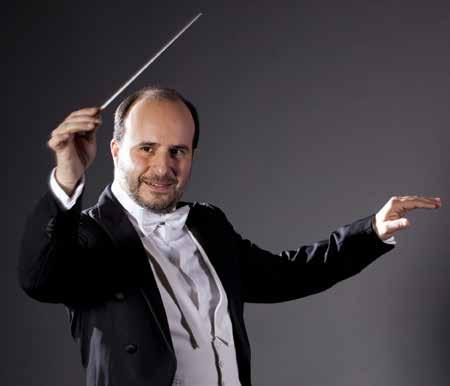
2025. november 14–16.
Müpa Budapest
Nonprofit Kft. 1095 Budapest, Komor Marcell u. 1.
Központi információ: Tel.: (+36 1) 555 3000
E-mail: info@mupa.hu www.mupa.hu
Nyitvatartás
Aktuális nyitvatartásunkról tájékozódjon a www.mupa.hu weboldalon.
A szerkesztés lezárult: 2025. június 10.
A programok rendezői a szereplő-, műsor- és árváltoztatás jogát fenntartják!
Stratégiai partnereink:
A Müpa támogatója a Kulturális és Innovációs Minisztérium.